Of course you are. Anyone is allowed to do whatever they want to 🙂Shit, uh...am i allowed to post the results from my world for clubs already talked about?
You are using an out of date browser. It may not display this or other websites correctly.
You should upgrade or use an alternative browser.
You should upgrade or use an alternative browser.
Alternate Football Wikis
- Thread starter ArupinumMaivista
- Start date
Threadmarks
View all 84 threadmarks
Reader mode
Reader mode
Recent threadmarks
Reichspokal (Mildtryth) SSC Napoli (ArupinumMaivista) England County leagues (Atzyn) La Plata Championship (Atzyn) Barcelona: 1994-2008 (ArupinumMaivista and Kinnikuniverse) Cup Winners' Cup (Kinnikuniverse) US Fiumana Inter Montreal (Kinnikuniverse)
Fiorentina

Name: Associazione Calcio Fiorentina
City: Florence
Nickname: La Viola (the purple), I Gigliati (the lilies)
Home Ground: Stadio Artemio Franchi
Attendance: 43,147
League: Serie A
HONOURS
DOMESTICSerie A: 1955-1956, 1958-1959, 1961-1962, 1981-1982, 1995-1996, 1998-1999, 2020-2021
Coppa Italia: 1935-1936, 1939-1940, 1954-1955, 1959-1960, 1960-1961, 1995-1996, 2013-2014, 2014-2015, 2018-2019
EUROPEAN
UEFA cup: 1989-1990
Cup Winners Cup: 1960-1961, 1961-1962
Football has been in florentine culture since even before the rules of association football were first implemented. The ancient game of calcio storico, native of 16th century florence, was a popular sport among the wealthy, and is still practoced today by fervent enthusiasts, although it looks more like a barbaric mix of football (both kinds) and MMA.
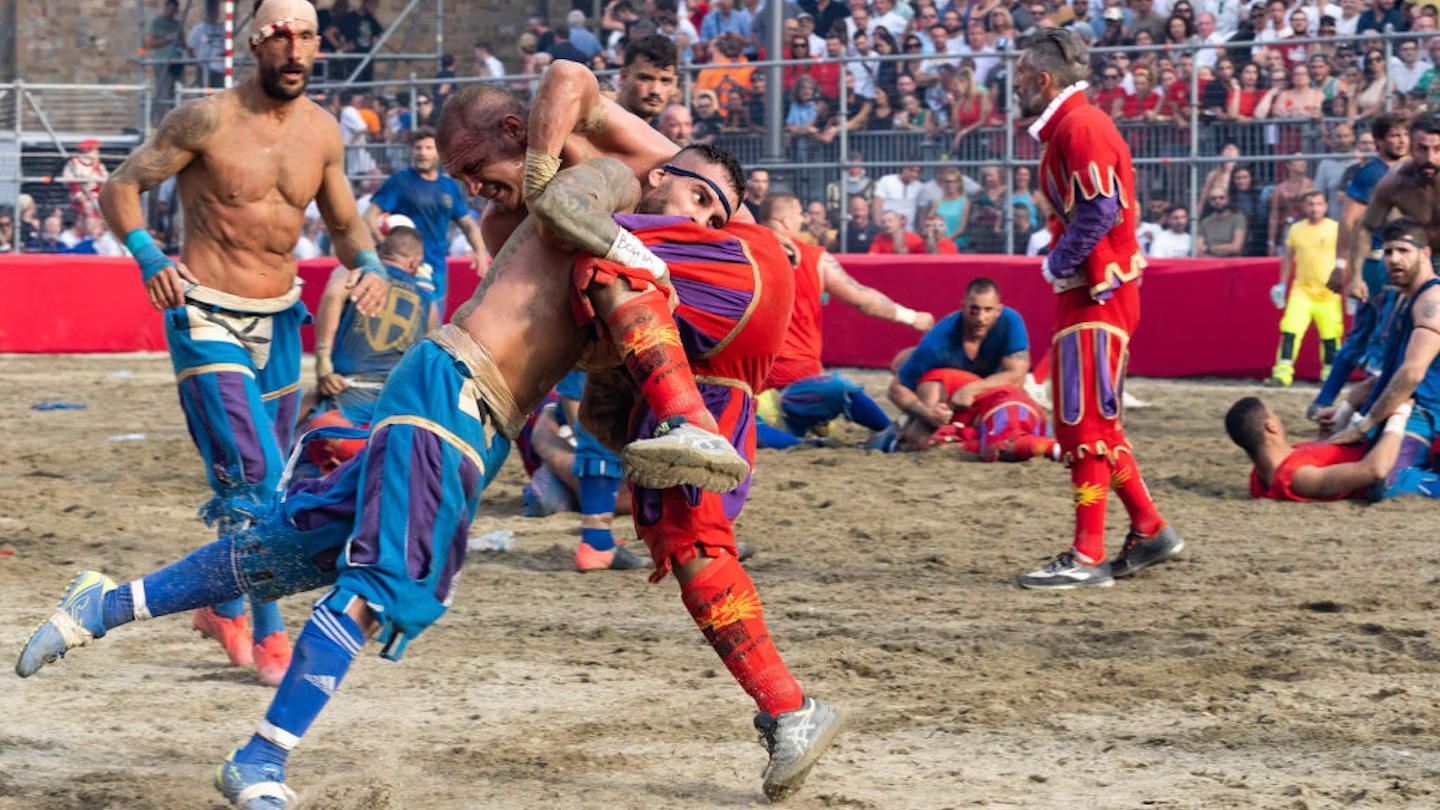
Fiorentina's founding came under less than savoury hands, as its founder, Luigi Ridolfi Vay da Verrazzano, wasan affluent member of the national fascist party, and he merged the two most prominent clubs in firenze, CS Firenze and PG Libertas, together to form a club strong enohgh to compete in the top tier of Italian football.
After a rough start and three seasons in lower leagues, Fiorentina reached the Serie A in 1931. That same year saw the opening of the new stadium, originally named after Giovanni Berta, a prominent fascist, but now known as Stadio Artemio Franchi. At the time, the stadium was a masterpiece of engineering, and its inauguration was monumental. To be able to compete with the best teams in Italy, Fiorentina strengthened their team with some new players, notably the Uruguayan Pedro Petrone, nicknamed el Artillero. Despite enjoying a good season and finishing in fourth place, Fiorentina were relegated the following year, although they would return quickly to Serie A, along with tasting their first piece of silverware by winning the 1936 coppa italia.
In 1940, they won their second Coppa Italia, but the team were unable to build on their success during the 1940s due to World War II and other troubles.

Fiorentina in 1955-1956, the first scudetto
In the 50s, innovative manager Fulvio Bernardini took charge, and assembled a strong squad festuring the likes of Argentine Miguel Montuori and young swedish winger Kurt Hamrin. They would win the 1955 coppa italia before winning their first two scudettos in 1956 and 1959. Back to back coppa italias in 1960 and 1961 was folloeed by winning the first 2 cup winners cup tournaments in 1961 and 1962, with Hamrin and Montuori now joined by new manager Nandor Hidegkuti and striker Aurelio Milani, who would end up as top scorer in the 1962 serie A and Enrico Albertosi ending up as Serie A top keeper with the most clean sheets.
The rest of the 60s would see La Viola slowly declining, and despite finishing runner up in 1968-1969 to Gigi Riva and Roberto Boninsegna's mighty Cagliari side, the club would enter a rebuild that lasted all the way to the late 70s, where Carlo Mazzone's arrival as head coach and a runner up finish to Napoli in the 1978 coppa italia final would be followed by the club being bought by Flavio Pontello, a real estate mogul, who would bring in world class players like Argentina's Daniel Passarella and Daniel Bertoni and Brazil's maestro, Socrates, along with Torino's Eraldo Pecci and Francesco Graziani and young prospects Pietro Vierchowod and Daniele Massaro to surround the club's captain Giancarlo Antognoni and goalkeeper Giovanni Galli.
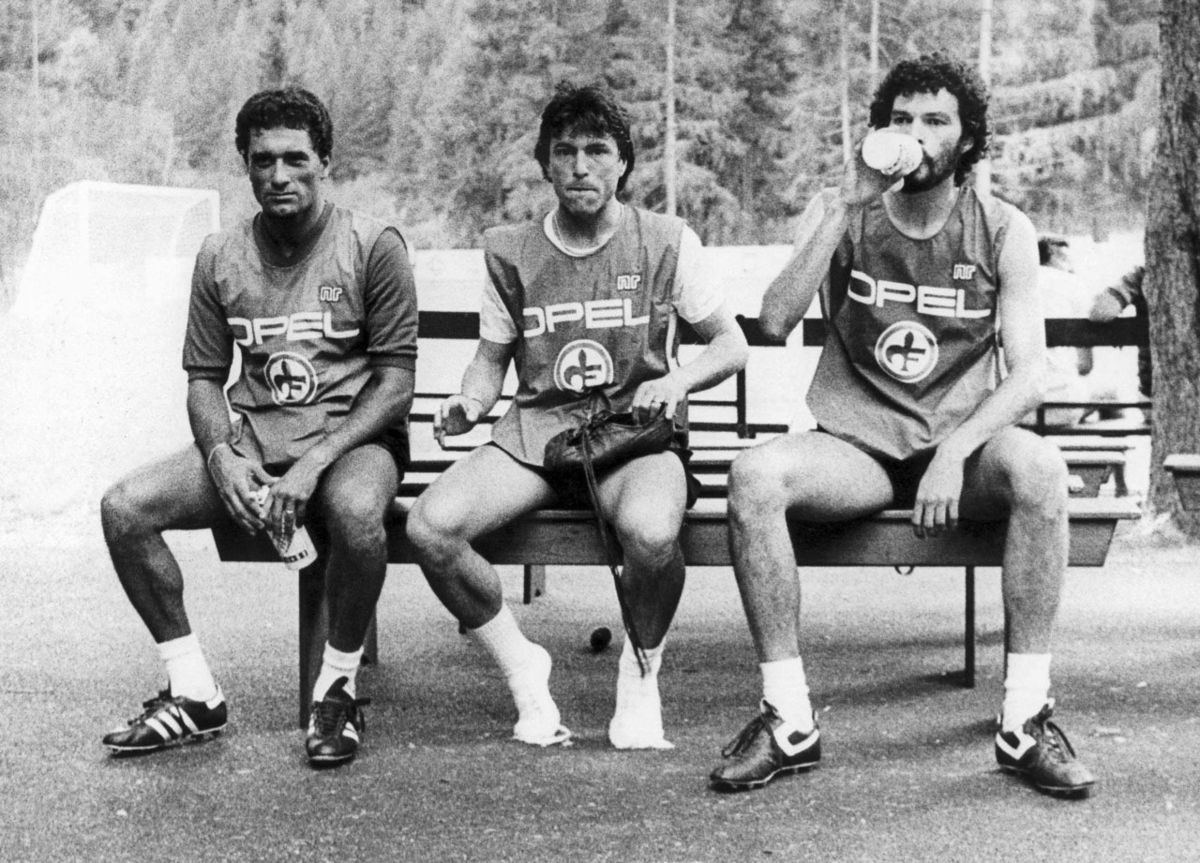
After missing out on a seemingly easy Scudetto to AS Roma in the post-totonero scandal 1980-1981 season, Mazzone and Fiorentina engaged in an exciting title race against the newly-promoted Juventus, who suffered relegation to Serie B as punishment for Paolo Rossi's involvement in the Totonero. On the final matchday, Juve were controversially denied a penalty to let Fiorentina win their first scudetto in 20 years.
From then on, Fiorentina were constantly in the hunt ofr european places in the incredibly competitive Serie A of the 80s, albeit not winning anything and retooling the squad on the fly around a young prodigy from Vicenza: Roberto Baggio.

Il divine codino represented the hopes of the la viola faithful as they battled to stay mid-table. With a young squad led by swede sven-goran eriksson, Baggio and Fiorentina would survive relegation in 1989-1990 while going all the way to the UEFA Cup final, where they defeated a freefalling Juventus to win their first european title since 1962.
Mario Cecchi Gori and his son Vittorio bought the club in 1990, promising Baggio to build a winner around him. After a stabilisation season in 1990-1991, where Baggio would explode into a 30-goal scorer, Gori would invest in the club, bringing in Giovanni Trappatoni, who won domestic and european honors with both Juventus and Inter, as manager as well as Padova's Angelo Di Livio, German International Stefan Effenberg, danish winger Brian Laudrup and Baggio's new partner up front: Gabriel Batistuta.

The following seasons would see Fiorentina stabilising in the top 6 of the golden age Serie A, with Baggio and Batistua running roughshod on opposing defenses, with Trappatoni instoring structure in Fiorentina's stylish attacking football by putting Baggio as a free-roaming playmaker behind Batistuta. Not only did Baggio become a more team-first player, Fiorentina became a much more balanced team, with Di Livio and Effenberg acting as double pivots in midfield, efficiently grabbing balls back and passing it to Baggio, who linked with the wingers Laudrup and Renato Buso so as to give the ball back to him in the attacking third to either go for goal or deliver through balls to Batigol.
La Viola would head to the UEFA Cup Final, only to lose it to a late George Weah goal as Paris scraps through 1-0. The following season, Fiorentina would barely lose out to 6th place and the final european spot to a late Paolo Di Canio goal for Napoli at the last matchday, while a scrappy game against Karlsruher would end on penalties, where Karlsruher goalie Oliver Khan presents himself to the world by stopping both Batistuta and Baggio as the small german side upsets la viola and win their first and only UEFA Cup title.
After the 1994 world cup, Trappatoni felt that something needed to be fixed. As such, Fiorentina sold Brian Laudrup to Rangers, then loaned Stefan Effenberg to Borussia Mochengladbach, bringing in Bari's Lorenzo Amoruso, Sampdoria's wingback Michele Serena, swedish midfielder Stefan Schwarz and the one missing piece of the puzzle: Portuguese number 10 Manuel Rui Costa.

With Baggio signing a 5-year contract extension with La Viola in 1995, Fiorentina brought back Effenberg from his successful loan at Monchengladbach, where he led the side to a DFB Pokal triumph the previous season.
This meant a switch to Trappatoni's signature Zona Mista tactic that led him to so much success, with di livio moving to a wide midfielder role on the left while effenberg served as the mezzala alongside stefan schwarz as the holding midfielder, while rui costa served as the playmaker to the two forwards baggio and batistuta.
The 1995-1996 season sees Fiorentina explode on the national scene, overcoming challenges from Lazio and a rejuvenated Milan side to win their first scudetto since 1982, with the sturdier defense and francesco toldo's rise to prominence in front of goal proving the difference. The trio of batigol, baggio and costa, collectively known as the BBC, combined for a total of 50 goals, making highlights on every football show in the world as Fiorentina completes a historic Scudetto-coppa double, Trappatoni becomign the first manager to win the scudetto with 3 different clubs.
While they went through a hangover in the 1996-1997 season, the club went all the waybto.the european cup final, the BBC tearing down everything in their path, from Atletico madrid to reigning back-to-back european champions Ajax, before unfortunately hitting a brickwall known as Otmar Hitzfeld and Borussia Dortmund, whose defensive block completely shut down the BBC as they upset the odds and win their first european cup 3-1, highlighted by sub Lars Ricken lobbing Toldo on the second goal.
While La Viola would bounce back in 97-98 on the back of Baggio and Batistuta's 43 goals combined, it was only good enough for 5th place in the standings in perhaps the greatest season of domestic football ever. However, this meant that this core still got another title in them in the near future.
In 1998, with Tomas Repka joining Alberto Malusci and Lorenzo Amoruso in the back 3 and Moreno Torricelli as the new wide midfielder on the right, la viola went the whole first half of the season almost unbeaten before an injury by Batistuta took him out for the season. Thankfully, Baggio took over the goalscoring, as he would deliver a talismanic season, scoring goal after goal and setting up Rui Costa and the surprise of the season in brazilian striker Edmundo as Fiorentina would comfortably fend off Lazio and Napoli to win their 6th scudetto.
Alas, this would signal the end of the golden era of Fiorentina, for the cecchi gori accumulated tons of debt trying to keep the team competitive. As such, the mass exodus began: Batistuta was sold to Roma in 2000 for a record fee, while Baggio would join Brescia as a free agent that same year, and finally, Rui Costa would leave for Milan for $43 million in 2001. Alas, it wasn't enough, and Fiorentina would declare bankruptcy and go through the third division in 2002-2003.
Just when the good times seemed back in florence when they reached serie a and started stabiliszing themselves in the top half of the table, they got hit by Calciopoli and were sent to the second division as punishment. Those were the dark days of Fiorentina.
The long road back to relevance started in 2012, when the club hired Vicenzo Montella, who brought lowly Catania to unexpected european football. Building an exciting squad around Stefan Savic, Norberto Neto, Davide Astori, Federico Bernardeschi, Juan Cuadrado and Stefan Jovetic along with the likes of Marcos Alonso, Riccardo Montolivo, Giuseppe Rossi and Borja Valero, La Viola would win back to back coppa italias in 2014 and 2015 before another exodus, with Cuadrado, Badej, Valero, Alonso and Rossi all leaving and Montella going to Valencia.
This led to the hiring of former player Stefano Pioli, who rebuild the squad around the club's homegrown talents such as Bernardeschi, Bartolomew Dragowski, cristiano Piccini, Savic and wunderkinds federico Chiesa and Dusan Vlahovic, and surrounding them with judicious transfers such as Marco Benassi, Lucas Torreira, Cristiano Biraghi and Riccardo Saponara.
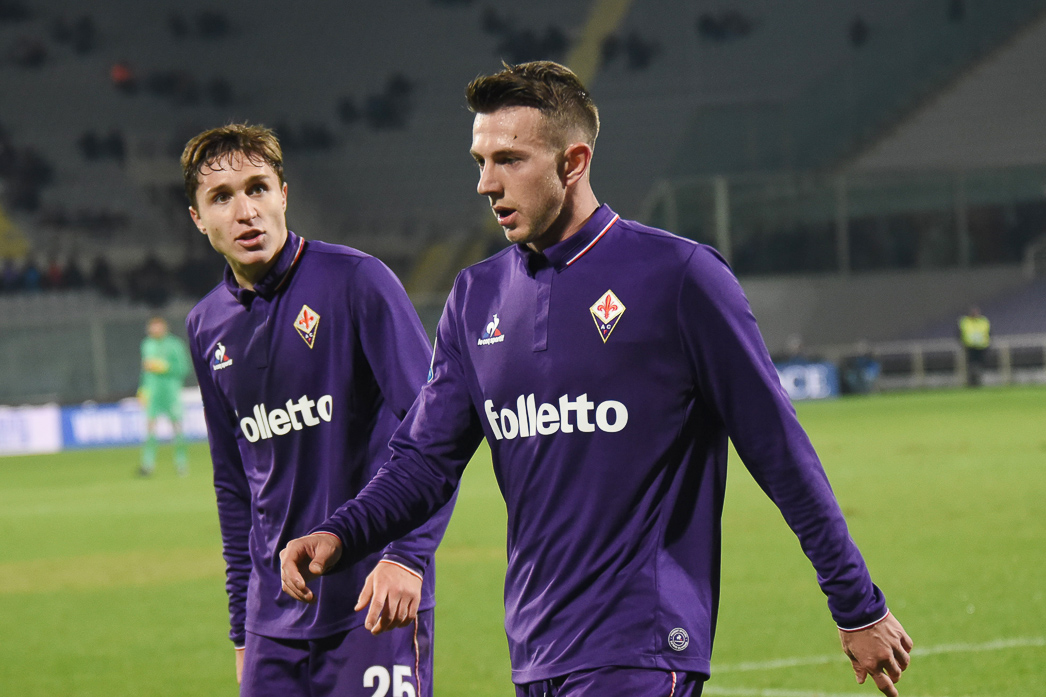
Under Pioli, la viola finally showed fhe face of a title contedner again, winning the 2019 coppa italia and reaching the 2020 cup winners cup final, losing to Stade Rennais.
The 2020-2021 seaspn would see fiorentina seemkngly finishing in a distant second behind the unbeaten milan in the first half of the season, but a shocking collapse and Fiorentina's excellent form led to la viola mounting an epic comeback in the standings, eventually overtaking milan with 4 games to go and winning and drawing their last games to achieve the unthinkable: winning their first scudetto since 1998-1999. Not only that, the likes of Bernardeschi and Chiesa became key players in Italy's undefeated Euro 2020 title run.
While their subsequent european campaigns ended up in disappointing early exits, it didn't matter, for Fiorentina overcame all the odds, all the humbling and the suffering, to finally rise like a phoenix and become a respected club once again.
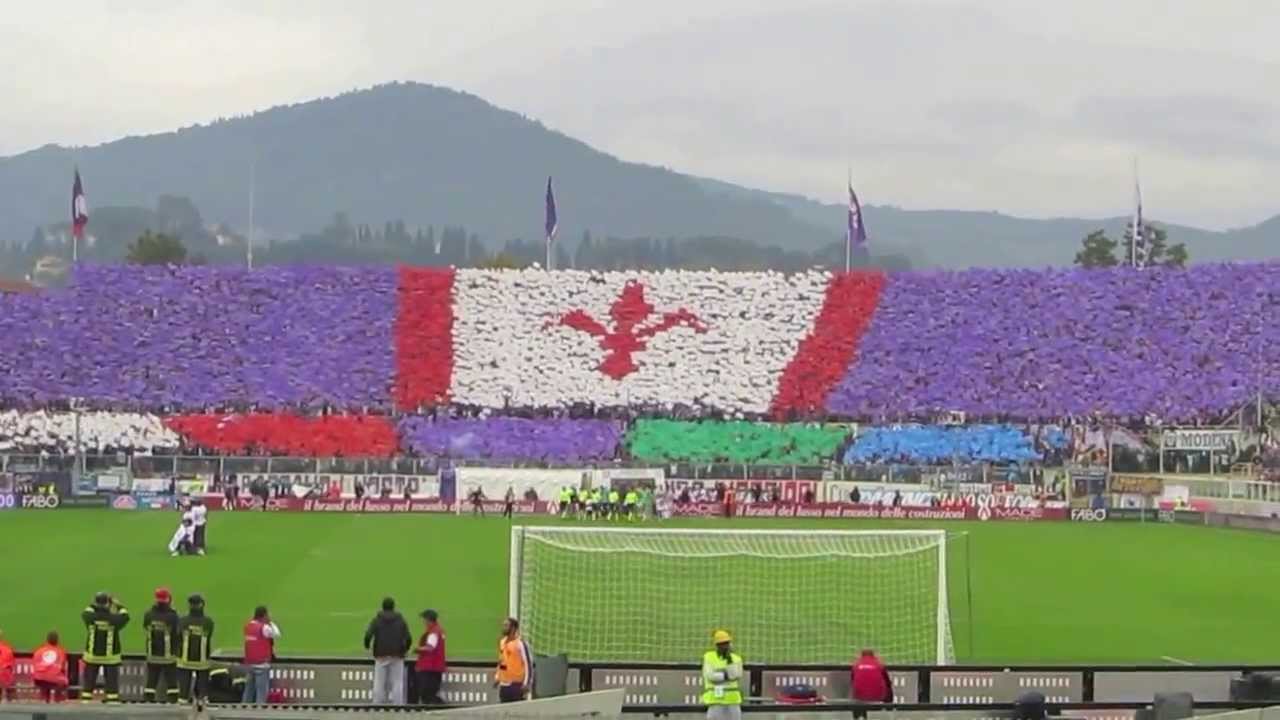
Last edited:
Yeah, imma chill right now and let others post here while i prepare the next batch
Slavia Prague

Name: SK Slavia Praha
City: Prague
Nicknames: The Slavists, The Stitched
Stadium: Fortuna Arena
Capacity: 19, 370
League: Czechoslovak Fortuna Liga
Honours
Domestic (40):
Czechoslovak League (20):
1925, 1928/29, 1929/30, 1930/31, 1932/33, 1933/34, 1934/35, 1936/37, 1946/47, 1948/49, 1965/66, 1975/76, 1976/77, 1992/93, 1995/96, 2006/07, 2007/08, 2008/09, 2018/19, 2019/20, 2020/21
Czechoslovak Cup (11):
1965/66, 1968/69, 1996/97, 1998/99, 2001/02, 2017/18, 2018/19, 2020/21, 2022/23
Bohemian Championship (5):
1913, 1939/40, 1940/41, 1941/42, 1942/43
Bohemian Cup (2):
1940/41, 1941/42,
Austro-Hungarian Challenge Cup (1):
1905
Czechoslovak Supercup (1):
2018
International (3):
European Cup/Champions League: Quarter-finals (1966/67, 1976/77)
UEFA Cup/Europa League (2): Winners: 2000/01, 2018/19
Mitropa Cup (1): Winners: 1938
European Cup Winners Cup: Quarter-finals (1997/98)
UEFA Conference League: Round of 16 (2022/23)
Nations Cup: Runners-up (1930)
The club was founded at a time when Czech nationalism was booming. It was born out of the efforts of the university patriotic association Literární a čnický spolek Slavia, which wanted to attract more students to sports. At the general meeting on November 2, 1892 in Vodičková street in Prague, the ACOS (Academic Cycling Section of Slavia) was founded. Soon after, the Slavic colors - red and white - became the club's official colors, with the addition of a red five-pointed star pointing downwards to symbolize hope even in times of failure. The official jersey became a t-shirt with red and white halves, with the star on the white half.
The original crest

Slavia played its first matches on March 25, 1896, as part of a tournament on Císařské louka. They first beat AC Prague 6-0, before playing their first ever Prague Derby against Sparta Prague, which ended 0-0. The club soon became a Dominant force in Czech football, having won the Bohemian Championship from 1896 to 1902. In 1896 though, the rivalry between Slavia and Sparta worsened when based on an anonymous tip, several high school professors showed up at the mutual match and forbade Slavia's players, who were high school students, to participate in the match. The writer of the allegation was never identified, but Slavia officials suspected a Sparta supporter to have written the note, and Slavia refused to play Sparta for several years. In 1900/01,
Slavia entered the Austrian-Hungarian Challenge Cup, which was one of Europe's greatest Leagues during that time, and Slavia managed to go all the way to the final, where they lost to Austrian side Vienna AC. That same year, Slavia had its first football stadium built in Letna, after their playground ended up being too small from all the crowds showing up to watch Slavia play. On October 19th, the Czech Football Association was established, and a Football Championship with it, but Slavia requested not to play, offering to have their reserve team play instead. Angered, the Association threatened to expel any team that would play against Slavia's reserves, but no such undertaking went ahead.
The original Slavia team


1901/02 saw Slavia achieve its first moment of glory when at The Austrian-Hungarian Challenge Cup final, they won against Budapest TC, thus becoming the First Czechoslovak side to become national champions of Austria-Hungary. They came close a year later, but eventually lost to Vienna AC. In 1903, Striker Jan Košek came to the club and remained there until 1912, scoring 666 goals in the process. But, the later years of the 1900s saw Slavia withdraw from the Challenge Cup, and subsequently entered a crisis in 1905, when its players and club's management had a dispute.
That very same year, Scottish Manager John Madden became Slavia's first international coach, and he took the team to a higher level during his tenure that spanned for a quarter of a decade. He introduced a new game system, improved training methods and oversaw compliance with the lifestyle. He was strict and demanding of the team, demanding discipline. But the players loved him. Slavia won the 1913 Bohemian Championship. However, the outbreak of the Great War saw all of the club's operations stop, and football was no longer the center of attention.
After the war, Madden continued to lead the squad through the 20s, and Slavia entered its first golden age in the 1920s, when the Stitched became a Dominant force in the Czechoslovak National League, along with being a common participant in the Mitropa Cup. However, the 1929 Mitropa Cup saw Slavia face off in the quarter-finals against Yugoslav side Hajduk Split, which coincidentally was formed in Prague as well by Croatian students in 1911. What was supposed to be a historic encounter between the two sides became chaotic as the loud crowd from Split threw rocks, rotten eggs and tomatoes at Slavia's players. After a stone hit and seriously injured Slavia goalkeeper František Plánička, Slavia's team walked off; Hajduk's players walked off as well, and their fans invaded the pitch, trapping both teams in the dressing room, and leading to the match being abandoned. Slavia did manage to enter the finals in the end, but they subsequently lost out to Ujpest. With Madden retiring in 1930, Slavia was by now a well-run team with an incredible squad, of which many of its players played for the Czechoslovak National Football team that subsequently won the 1936 European Nations Cup and the 1934 World Cup in Sweden.
Slavia's golden team, led by John Madden


At home, Slavia's relations with Sparta got worse when František Svoboda was rumored to be transferring to Sparta, causing anger among the fans. Svoboda stayed in Slavia though, and the first match that took place between the two clubs in 1931 resembled more of a brawl than a football match. The subsequent years saw Slavia exchanging Championships with Sparta from 1934 to 1937, in a period which The Slavists won twice. In 1937, Slavia went through a significant personnel change. At the beginning of the 1937/38 season, striker Josef Bican transferred to Slavia , who gradually became the biggest legend of the club. In 1938, Slavia achieved its greatest success on the international stage, winning the Mitropa Cup, after beating BSK Belgrade, Rapid Vienna and Austria Vienna and finally beating Ferencvaros in the final. The two Wins against the Austrian Teams are seen as the Czechoslovak defiance of the Nazis. The two matches were played after the Anschluss, and the Nazi government wanted to show off the Austrian Teams as examples of the superior Aryan Race. The very same year though, Czechoslovakia was annexed by Germany, while Slovakia became a puppet state. During this period, Slavia was a Dominant club in the Bohemian Championship.
Josef Bican - Slavia's Greatest Player

World War II ended in Europe in May 1945. On May 6, 1945, during the Prague Uprising , the Slavist stadium on Letná burned down. The fire was deliberately started by Wehrmacht soldiers. All equipment was reduced to ashes, as well as trophies, club chronicles and archives. Slavia immediately started repairs, but for some time they had to guest on different pitches, for example Sparta or Strahov. Slavia managed to win newly reestablished Czechoslovak league in 1946/47. Another title came in 1948/49, but the next few years saw Slavia struggle in the league, with their worst position being 8th in the 1951/52 season. Subsequently, Slavia gradually degraded to the point of battling against relegation, but the club managed to stay up thanks to the talents of Rudolf Kučera and Otto Hemele. By 1963, the supporters of Slavia organised a fan group to help cheer for Slavia during its hardest times.
Following an entire decade of struggle, Slavia found itself in the heat of an intense battle for the Czechoslovak title during the 1965/66 season against their greatest rival Sparta Prague that saw the two club tied on points for most of the season. By the time Slavia hosted the home match against Sparta; The Eden Stadium that had been in place since 1953 saw record attendance with 56 thousand spectators coming over. Eventually, Slavia became national champions for the first time in 19 years, along with achieving its first double within an independent Czechoslovakia, thus marking the clubs' return to European competitions. Slavia managed to reach the quarter-finals of the 1966/67 iteration of the European Cup, but aside from another cup triumph in 1969, Slavia would have to wait another 10 years to lift the national trophy once again. For the next 20 years, Slavia would mostly struggle as a club, with an occasional appearance in the UEFA Cup, where they managed to reach the quarter-finals in 1979.
The 1965/66 Squad of Slavia. The season is nicknamed "Return of White and Red"
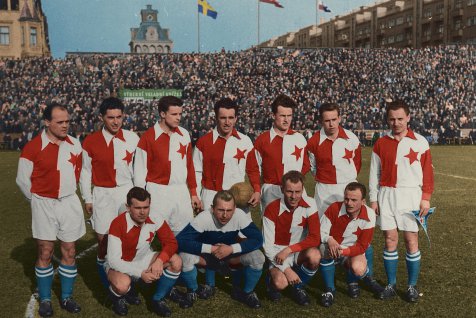

From 1995, Slavia would enter its new period of glory, starting with a phenomenal campaign in the UEFA Cup, where the club reached the semi-finals after beating Freiburg, Lens, Roma and only being halted by Bordeaux. In 1996, after 20 years of frustration, Slavia finally become National Champions once again, but failed to qualify for the European Champions League. Further European successes helped Slavia reach the quarter-finals of the Cup winners Cup in 1998, before another campaign in the UEFA Cup after taking the 1999 Czechoslovak Cup, where they went on to beat Steaua Bucgarest, Grasshopper, then Partisan Belgrade and Anderlecht, and finally meeting Arsenal in the final. Incredibly, Slavia managed to hold out against the Gunners for 120 minutes, and the game went to the penalties, where Slavia won against the English. Another period of domination occured from 2006 to 2009, where Slavia won three titles in a row, and the building of the new Fortuna Arena promised fireworks for the 2010s and beyond. During this period from the late 90s to the early 2000s, a great number of Slavia's players were the backbone of the Czechoslovak National Football Team that reached the finals of the 1996 Euros, led by prominent players Vladimir Šmicer and Karel Poborsky.
However, the early 2010s saw Slavia regress due to an increasing amounts of debt. Slavia's results got all the more terrible, causing the fans to invade the pitch during a match against local rivals Bohemians in 2014. Despite this terrible occurence, Slavia remained in the top flight of Czechoslovak football, and managed to recover financially. From then on, Slavia has recovered to becoming one of Czechoslovakia's most dominant sides, with the 2018/19 Season seeing Slavia score a spectacular quadruple. They started the season winning the Supercup against Spartak Trnava, before Winning the league and Cup, and finally taking Europe by storm after lifting the Europa League trophy against Arsenal once again on penalties, thus joining am exclusive club of teams that had accomplished such a feat, joining only Glasgow Rangers.
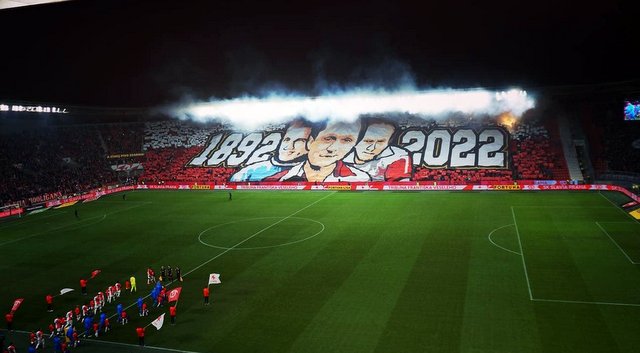
Last edited:
Funny you did that club, because on my trip to rome, AS Roma will play against Slavia on october 26th

Name: SK Slavia Praha
City: Prague
Nicknames: The Slavists, The Stitched
Stadium: Fortuna Arena
Capacity: 19, 370
League: Czechoslovak Fortuna Liga
Honours
Domestic (38):
Czechoslovak League (20):
1925, 1928/29, 1929/30, 1930/31, 1932/33, 1933/34, 1934/35, 1936/37, 1946/47, 1948/49, 1965/66, 1975/76, 1976/77, 1995/96, 2006/07, 2007/08, 2008/09, 2016/17, 2018/19, 2020/21, 2022/23
Czechoslovak Cup (11):
1940/41, 1941/42, 1965/66, 1968/69, 1996/97, 1998/99, 2001/02, 2017/18, 2018/19, 2020/21, 2022/23
Bohemian Championship (5):
1913, 1939/40, 1940/41, 1941/42, 1942/43,
Austro-Hungarian Challenge Cup (1):
1905
Czechoslovak Supercup (1):
2018
International (2):
European Cup/Champions League: Quarter-finals (1966/67, 1976/77)
UEFA Cup/Europa League (1): Winners: 2000/01
Mitropa Cup (1): Winners: 1938
European Cup Winners Cup: Quarter-finals (1997/98)
UEFA Conference League: Round of 16 (2022/23)
Nations Cup: Runners-up (1930)
The club was founded at a time when Czech nationalism was booming. It was born out of the efforts of the university patriotic association Literární a čnický spolek Slavia, which wanted to attract more students to sports. At the general meeting on November 2, 1892 in Vodičková street in Prague, the ACOS (Academic Cycling Section of Slavia) was founded. Soon after, the Slavic colors - red and white - became the club's official colors, with the addition of a red five-pointed star pointing downwards to symbolize hope even in times of failure. The official jersey became a t-shirt with red and white halves, with the star on the white half.
The original crest
View attachment 854479
Slavia played its first matches on March 25, 1896, as part of a tournament on Císařské louka. They first beat AC Prague 6-0, before playing their first ever Prague Derby against Sparta Prague, which ended 0-0. The club soon became a Dominant force in Czech football, having won the Bohemian Championship from 1896 to 1902. In 1896 though, the rivalry between Slavia and Sparta worsened when based on an anonymous tip, several high school professors showed up at the mutual match and forbade Slavia's players, who were high school students, to participate in the match. The writer of the allegation was never identified, but Slavia officials suspected a Sparta supporter to have written the note, and Slavia refused to play Sparta for several years. In 1900/01,
Slavia entered the Austrian-Hungarian Challenge Cup, which was one of Europe's greatest Leagues during that time, and Slavia managed to go all the way to the final, where they lost to Austrian side Vienna AC. That same year, Slavia had its first football stadium built in Letna, after their playground ended up being too small from all the crowds showing up to watch Slavia play. On October 19th, the Czech Football Association was established, and a Football Championship with it, but Slavia requested not to play, offering to have their reserve team play instead. Angered, the Association threatened to expel any team that would play against Slavia's reserves, but no such undertaking went ahead.
The original Slavia team

1901/02 saw Slavia achieve its first moment of glory when at The Austrian-Hungarian Challenge Cup final, they won against Budapest TC, thus becoming the First Czechoslovak side to become national champions of Austria-Hungary. They came close a year later, but eventually lost to Vienna AC. In 1903, Striker Jan Košek came to the club and remained there until 1912, scoring 666 goals in the process. But, the later years of the 1900s saw Slavia withdraw from the Challenge Cup, and subsequently entered a crisis in 1905, when its players and club's management had a dispute.
That very same year, Scottish Manager John Madden became Slavia's first international coach, and he took the team to a higher level during his tenure that spanned for a quarter of a decade. He introduced a new game system, improved training methods and oversaw compliance with the lifestyle. He was strict and demanding of the team, demanding discipline. But the players loved him. Slavia won the 1913 Bohemian Championship. However, the outbreak of the Great War saw all of the club's operations stop, and football was no longer the center of attention.
After the war, Madden continued to lead the squad through the 20s, and Slavia entered its first golden age in the 1920s, when the Stitched became a Dominant force in the Czechoslovak National League, along with being a common participant in the Mitropa Cup. With Madden retiring in 1930, Slavia was by now a well-run team with an incredible squad, of which many of its players played for the Czechoslovak National Football team that subsequently won the 1936 European Nations Cup and the 1934 World Cup in Sweden. However, the 1932 Mitropa Cup saw Slavia face off in the semi-finals against Yugoslav side Hajduk Split, which coincidentally was formed in Prague as well by Croatian students in 1911. What was supposed to be a historic encounter between the two sides became chaotic as the loud crowd from Split threw rocks, rotten eggs and tomatoes at Slavia's players. After a stone hit and seriously injured Slavia goalkeeper František Plánička, Slavia's team walked off; Hajduk's players walked off as well, and their fans invaded the pitch, trapping both teams in the dressing room, and leading to the match being abandoned. Slavia did manage to enter the finals in the end, but they subsequently lost out to First Vienna.
Slavia's golden team, led by John Madden

At home, Slavia's relations with Sparta got worse when František Svoboda was rumored to be transferring to Sparta, causing anger among the fans. Svoboda stayed in Slavia though, and the first match that took place between the two clubs in 1931 resembled more of a brawl than a football match. The subsequent years saw Slavia exchanging Championships with Sparta from 1934 to 1937, in a period which The Slavists won twice. In 1937, Slavia went through a significant personnel change. At the beginning of the 1937/38 season, striker Josef Bican transferred to Slavia , who gradually became the biggest legend of the club. In 1938, Slavia achieved its greatest success on the international stage, winning the Mitropa Cup, after beating BSK Belgrade, Rapid Vienna and Austria Vienna and finally beating Ferencvaros in the final. The two Wins against the Austrian Teams are seen as the Czechoslovak defiance of the Nazis. The two matches were played after the Anschluss, and the Nazi government wanted to show off the Austrian Teams as examples of the superior Aryan Race. The very same year though, Czechoslovakia was annexed by Germany, while Slovakia became a puppet state. During this period, Slavia was a Dominant club in the Bohemian Championship.
Josef Bican - Slavia's Greatest Player

World War II ended in Europe in May 1945. On May 6, 1945, during the Prague Uprising , the Slavist stadium on Letná burned down. The fire was deliberately started by Wehrmacht soldiers. All equipment was reduced to ashes, as well as trophies, club chronicles and archives. Slavia immediately started repairs, but for some time they had to guest on different pitches, for example Sparta or Strahov. Slavia managed to win newly reestablished Czechoslovak league in 1946/47. Another title came in 1948/49, but the next few years saw Slavia struggle in the league, with their worst position being 8th in the 1951/52 season. Subsequently, Slavia gradually degraded to the point of battling against relegation, but the club managed to stay up thanks to the talents of Rudolf Kučera and Otto Hemele. By 1963, the supporters of Slavia organised a fan group to help cheer for Slavia during its hardest times.
Following an entire decade of struggle, Slavia found itself in the heat of an intense battle for the Czechoslovak title during the 1965/66 season against their greatest rival Sparta Prague that saw the two club tied on points for most of the season. By the time Slavia hosted the home match against Sparta; The Eden Stadium that had been in place since 1953 saw record attendance with 56 thousand spectators coming over. Eventually, Slavia became national champions for the first time in 19 years, along with achieving its first double within an independent Czechoslovakia, thus marking the clubs' return to European competitions. Slavia managed to reach the quarter-finals of the 1966/67 iteration of the European Cup, but aside from another cup triumph in 1969, Slavia would have to wait another 10 years to lift the national trophy once again. For the next 20 years, Slavia would mostly struggle as a club, with an occasional appearance in the UEFA Cup, where they managed to reach the quarter-finals in 1979.
The 1965/66 Squad of Slavia. The season is nicknamed "Return of White and Red"

From 1995, Slavia would enter its new period of glory, starting with a phenomenal campaign in the UEFA Cup, where the club reached the semi-finals after beating Freiburg, Lens, Roma and only being halted by Bordeaux. In 1996, after 20 years of frustration, Slavia finally become National Champions once again, but failed to qualify for the European Champions League. Further European successes helped Slavia reach the quarter-finals of the Cup winners Cup in 1998, before another campaign in the UEFA Cup after taking the 1999 Czechoslovak Cup, where they went on to beat Steaua Bucgarest, Grasshopper, then Partisan Belgrade and Anderlecht, and finally meeting Arsenal in the final. Incredibly, Slavia managed to hold out against the Gunners for 120 minutes, and the game went to the penalties, where Slavia won against the English. Another period of domination occured from 2006 to 2009, where Slavia won three titles in a row, and the building of the new Fortuna Arena promised fireworks for the 2010s and beyond. During this period from the late 90s to the early 2000s, a great number of Slavia's players were the backbone of the Czechoslovak National Football Team that reached the finals of the 1996 Euros, led by prominent players Vladimir Šmicer and Karel Poborsky.

However, the early 2010s saw Slavia regress due to an increasing amounts of debt. Slavia's results got all the more terrible, causing the fans to invade the pitch during a match against local rivals Bohemians in 2014. Despite this terrible occurence, Slavia remained in the top flight of Czechoslovak football, and 2017 saw Slavia become national champions for the first time in 8 years. From then on, Slavia has recovered to becoming one of Czechoslovakia's most dominant sides, with the 2022/23 season ending with Slavia scoring its 20th National title, along with lifting the Czechoslovak Cup.

Berliner FC
Nicknames: The Berliners, the clarets
Founded: 21st June 1958
Ground: Olympiastadion
Capacity: 74,000
League: 2nd Bundesliga
The club was formed on 21st of June 1958, a few months prior to the 1958/59 season of the East Oberliga, when the members of Hertha BSC, 1890 Blau-Weiss and SSC Berlin agreed to a proposal of merging the clubs together. The proposal itself was opposed only by the members of Union Berlin and Tennis-Borussia Berlin, which continued on to operate alone. With the best players of Blau-Weiss, Hertha and SSC, along with coach Fritz Godicker, Berliner FC finished their inaugural 1958/59 season in the east Oberliga 6th, followed by a solid 3rd the next year where they won their first piece of silverware by lifting the DFB Pokal. This led to their qualification for the 1960/61 Cup Winners Cup, where they were dominated by Scottish side Rangers, who beat them 11-0 on aggregate. Nonetheless, the team continued to be a mid-table side for most of the 60s until BFC suffered a collapse in their results in 1966/67, when they were fighting for relegation. Supporters of 1. FC Union Berlin mocked the team with a banner saying "We greet the relegated". 1. FC Union Berlin won the match 3-0 and BFC was now practically relegated. The match is seen as the starting point for the feud between the two clubs.
BFC's original team
The next five years proved to be some of Berlin's hardest, as the clarets spent two seasons in the Amateurliga, and even risked relegation to the Bezirksliga, but disaster was averted when Berliner FC escaped relegation by four points. Following that near-miss, BFC managed to finish the 1968/69 Amateurliga Berlin in 1st place, thus Qualifying for the 1969/70 East Regionalliga. By 1969, a young and talented squad of players made their debuts in the BFC, and the results were slowly improving as Berlin became a more consistent squad within the Regionalliga. Then finally, in the 1971/72 season, Berliner FC finished 1st in the Regionalliga to enter the Bundesliga for the first time in their history.
BFC's first year in the Bundesliga was one of ups and downs, as the clarets largely spent their time fighting against relegation with Hannover 96 and Schalke 04. Dramatically, BFC managed to stay up by only 2 points. The next few seasons weren't any better, with Berlin Constantly fighting in the mid table. During the 70s, Berliner FC's best finish would end up being a 6th, which was enough for the clarets to qualify for the UEFA Cup. Remarkably though, BFC managed to go all the way to the semi finals of the European tournament, where they lost out to eventual champions Red Star Belgrade on penalties. Another UEFA Cup appearance occurred in 1981 after a 5th place finish. This time though, BFC only managed to reach the 2nd round, where they were knocked out by Real Madrid.
Scenes from a 1971/72 Game
BFC entered their golden years in the 80s, when the Clarets won the 1982/93 Bundesliga season and subsequently reached the quarter finals of the European Cup. The club developed a great generation of players like Andreas Thom, Bernd Schulz, and Hans Riediger, and a surprise season win followed after a win against Dresdner SC. Once in the European Cup, BFC managed to go all the way to the quarter-finals. Occasional Appearances occurred in the UEFA Cup, with the Berliners reaching the round of 16 in the 1985/86 UEFA Cup, and more famously a quarter-final appearance in 1987/88. BFC'S next big feat was reaching the 1989/90 Cup Winners Cup Semi-finals. Unfortunately, by the 1990/91 season, BFC would finish last in the Bundesliga and thus get relegated to the 2nd Bundesliga, where they would spend 6 years in.
BFC players celebrating their one-off title

Entering the 21st century, BFC managed to remain in the Bundesliga, with their best finish being a 3rd in the 1998/99 Season. The Clarets in the meantime remained a sporadic guest in the European Competitions, with their best result being a Round of 16 in the 2002/03 Season, where they were knocked out by Hajduk Split. Their last European campaign was in 2009/10. No trophies though, and as of 2023 - Berliner FC is in the 2nd Bundesliga, with doubts over BFC staying in the Olympiastadion.
Honours (3):Domestic:
German Bundesliga (1):
1982/83
DFB Pokal (2):
1959/60, 1988/89
Continental:
European Cup/Champions League:
Quarter-finals (1983/84)
European Cup winners Cup:
Round of 16 (1989/90)
UEFA cup/Euroleague:
Semi-finals (1978/79)
Manchester City
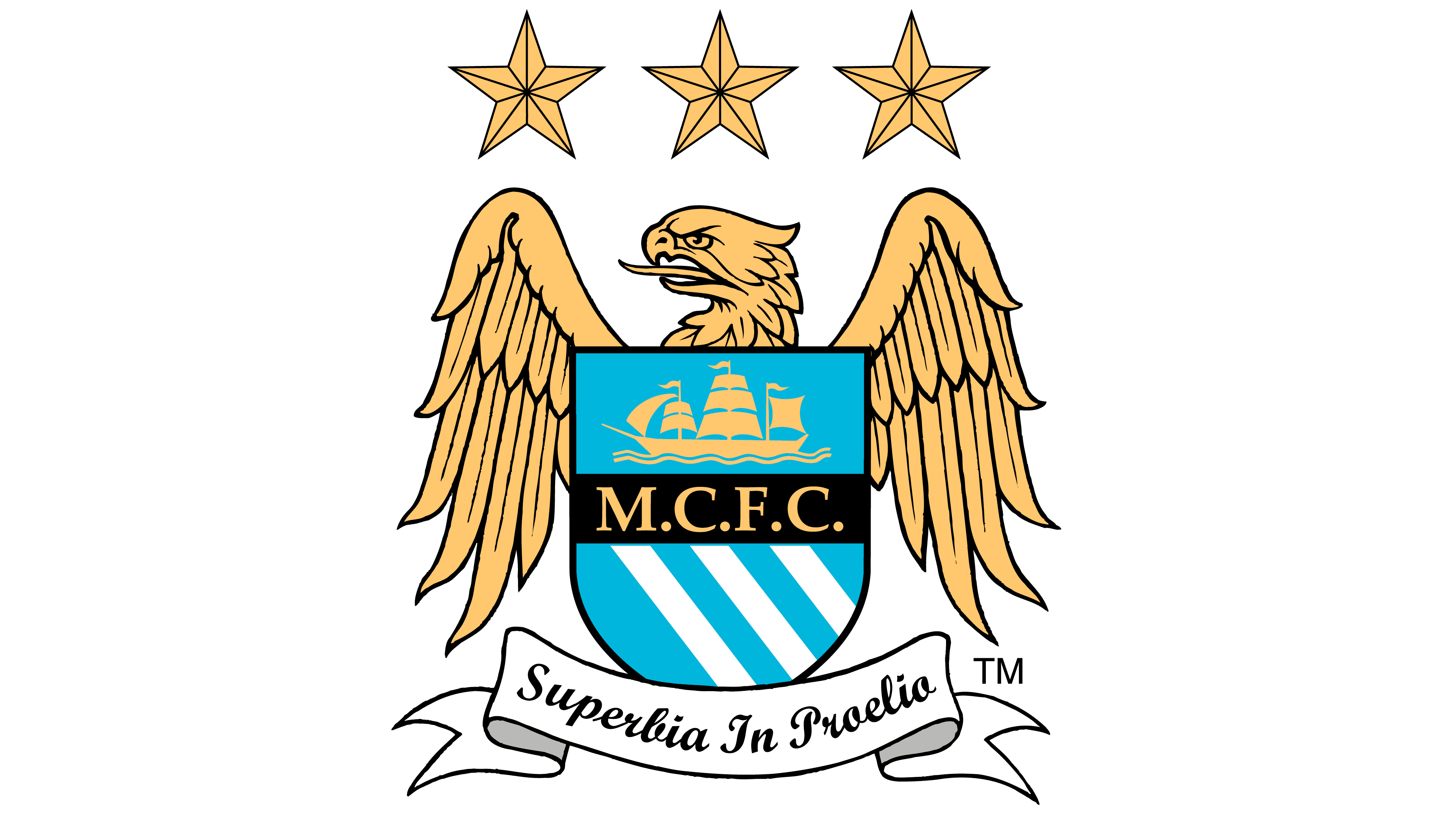
Name: Manchester City Football Club
City: Manchester
Nicknames: The Sky Blues, the Citizens
Stadium: City of Manchester Stadium
Attendance: 55,000
League: Football League First Division
HONORS
DOMESTIC
First Division: 1903-1904, 1967-1968, 1976-1977, 2011-2012, 2013-2014
FA Cup: 1903-1904, 1955-1956, 1968-1969, 1975-1976, 2010-2011, 2018-2019
League Cup: 2013-2014, 2019-2020
EUROPEAN
EEuropeanCup/Champions League: semi-finals 1977-1978
UEFA Cup: semi-finals 1975-1976
Cup Winners Cup: 1969-1970
Members of St. Mark's Church of England, West Gorton, Manchester, founded the football club that would become known as Manchester City for largely humanitarian purposes. Two church wardens sought to curb local gang violence and alcoholism by instituting new activities for local men, whilst high unemployment plagued East Manchester, specifically Gorton. All men were welcome to join, regardless of religion.
A church cricket club had been formed in 1875, but no equivalent for the winter months existed. To rectify this, and as part of Rector Arthur Connell's general push to intervene in social ills, church wardens William Beastow and Thomas Goodbehere, who held senior positions at the Union Iron Works, started a church football team called St Mark's (West Gorton), sometimes written as West Gorton (St Mark's), in the winter of 1880.
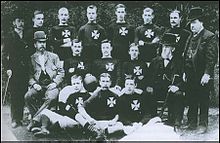
The team's first recorded match occurred on 13 November 1880, against a church team from Macclesfield. St. Marks lost the match 2–1, and only won one match during their inaugural 1880–81 season, with a victory over Stalybridge Clarence in March 1881.
City gained their first honours by winning the Second Division in 1899; with it came promotion to the highest level in English football, the First Division. They went on to claim their first major honour on 23 April 1904, beating Bolton Wanderers 1–0 at Crystal Palace to win the FA Cup and winning the league title in that same year, becoming the first club in Manchester to win major honours. In the seasons following the double, the club was dogged by allegations of financial irregularities, culminating in the suspension of seventeen players in 1906, including captain Billy Meredith, who subsequently moved across town to Manchester United. A fire at Hyde Road destroyed the main stand in 1920, and in 1923 the club moved to their new purpose-built stadium at Maine Road in Moss Side.
In the 1930s, Manchester City reached the FA Cup final, losing to Everton in 1933. During the 1934 cup run, Manchester City broke the record for the highest home attendance of any club in English football history, as 84,569 fans packed Maine Road for a sixth round FA Cup tie against Stoke City in 1934—a record which still stands to this day. The club was relegated in 1937-1938 despite scoring more goals than any other team in the division. Twenty years later, a City team inspired by a tactical system known as the Revie Plan reached consecutive FA Cup finals again, in 1955 and 1956; they lost the first one, to Newcastle United, and won the second. The 1956 final, in which Manchester City beat Birmingham City 3–1, is one of the most famous finals of all-time, and is remembered for City goalkeeper Bert Trautmann continuing to play on after unknowingly breaking his neck.
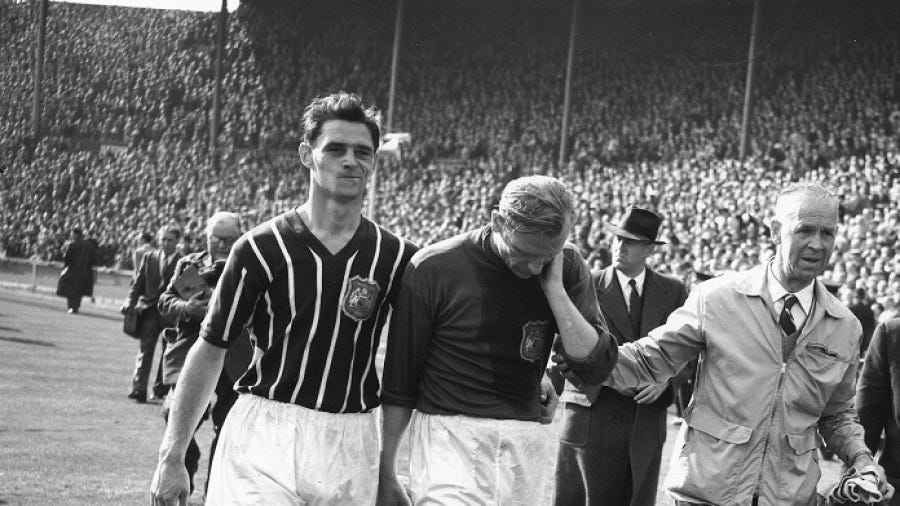
After relegation to the Second Division in 1963, the future looked bleak with a record low home attendance of 8,015 against Swindon Town in January 1965. In the summer of 1965, the management team of Joe Mercer and Malcolm Allison was appointed. In the first season under Mercer, City won the Second Division title and made important signings in Mike Summerbee and Colin Bell. Two seasons later, in 1967–68, Manchester City claimed the League Championship for the second time, clinching the title on the final day of the season with a 4–3 win at Newcastle United and beating their close neighbours Manchester United into second place. Further trophies followed: City won the FA Cup in 1969, before achieving European success by winning the European Cup Winners' Cup in 1970, beating Górnik Zabrze 2–1 in Vienna. City also won the League Cup that season, becoming the second English team to win a European trophy and a domestic trophy in the same season.

City's late 60s championship team
1974 would see Manchester City pull off a major coup, as they managed to sneak Poland's euro 1972-winning star Kasimierz Deyna out of the eastern bloc. With their polish star in tow, along with players like asa hartford, Brian Kidd, Elias Figueroa and Dennis Tuart, Man City would win the 1976 FA Cup before snatching the 1977 league title from Liverpool.

Kasimierz Deyna
Alas, this would end up being the last hurrah for city, for they would hit a decades long slump, whoch culminated in.them falling donw to the third division in 1996. This led to a big management shake-up at the club, with Kevin Keegan taking them back to the first division in 2002 and brought them to european qualification for the first time in years. What would follow would be mid years of mid-table finishes as the club would begin putting in austerity measures and nurturing a young core composed of Micah Richards, Shaun Wright-Phillips, Nediem Onuoha, Joe Hart, Stephen Ireland, Joey Barton and Daniel Sturridge.
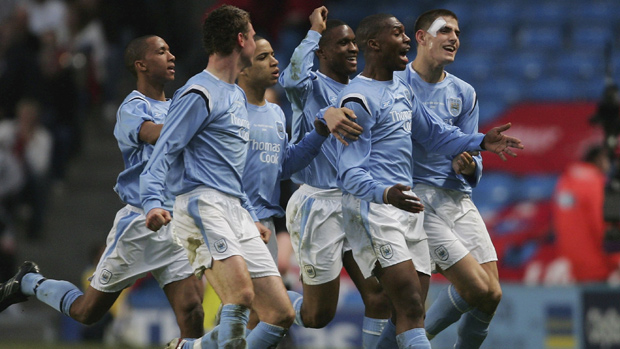
the young citizens
Those austerity measures, as it turns out, would be a blessing for the club, for they managed to pick up at a bargain price a bunch of under-the-radar signings such as Argentinian right back Pablo Zabaleta, Belgian defender Vincent Kompany and english international Gareth Barry, all for a combined fee under $30 million. The arrival of Roberto Mancini, who took a sabbatical in 2008-2009 following his falling out with Inter Milan, as well as even more shred business deals like Free agent Yaya Touré in 2009, followed by his brother Kolo, both from monaco, as well as the $7 million transfer of Middlesbrough's Adam Johnson, in 2010, sees man city starting to build a promising squad under Mancini, along with the emergence of Barton, Richards, Kompany, Hart and Sturridge as indispensable members of the squad, ending in 4th in 2010-2011 while winning their first piece of silverware since the 1977 league title by beating Stoke City in the FA Cup Final.
More cost-effective depth came in 2011, as Owen Hargreaves and Roque Santa Cruz came as free agents and Monaco's Gael Clichy arrived for only $7 million. That season, Mancini and Man City became title contenders, entering a tense title race with Alex Ferguson's Leeds United, Wayne Rooney's Manchester United and West Ham.
On the last day of the season, against Queens Park Rangers, United scored at the last minute of their game, meaning that City needed to score a late goal to win it on goal difference. In comes Daniel Sturridge, who becomes a city hero by burying shaun wright phillips's cross in the back of the QPR net to win City's first since 1977 in a miracle season.
And two years later, they did it again, for City would once again enter a crazy title race in 2013-2014. This time, with Aston Villa, Everton, Liverpool and Southampton. And in the end, Man City would once again come out on top, and add a league cup victory for a double. Daniel Sturridge would end up as top scorer of the entire first division with 24 goals.
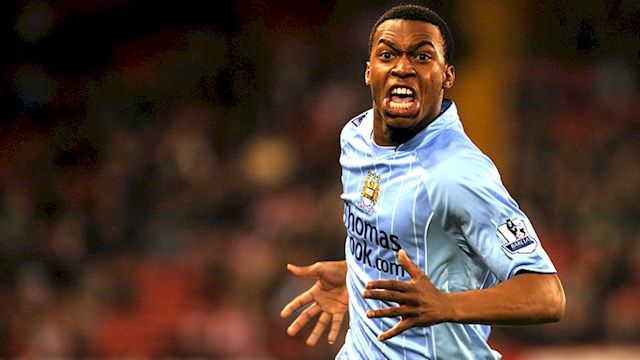
Daniel Sturridge celebrating a goal
Sadly, those good times would come to scratching halt the next season. Mancini would come back to Inter following the latter club's ownership change from Massimo Morratti, while in even worse news, Adam Johnson was arressted and found guilty of grooming a minor, ending his footballing career in one fell swoop, while the club's aging core and daniel sturridge's injury woes following his 24-goal season would see City decline and be forced into a rebuild.
Nowadays, With some promising talents such as Jason Denayer, Phil Foden, Rico Lewis, Oleksandr Zinchenko, Kelechi Ienacho, Jadon Sancho and the $25 million signing of Birmingham's teenaged wudnerkind Jude Bellingham, as well as recent free agent signings Kyle Walker, Bernardo Silva, Nathan Ake and Benfica's goalkeeper Ederson, City is slowly but surely starting to climb back up into top half finishes, with an FA Cup win in 2019 and a league cup win in 2020 showing signs of a more positive future heading into the 2020s.
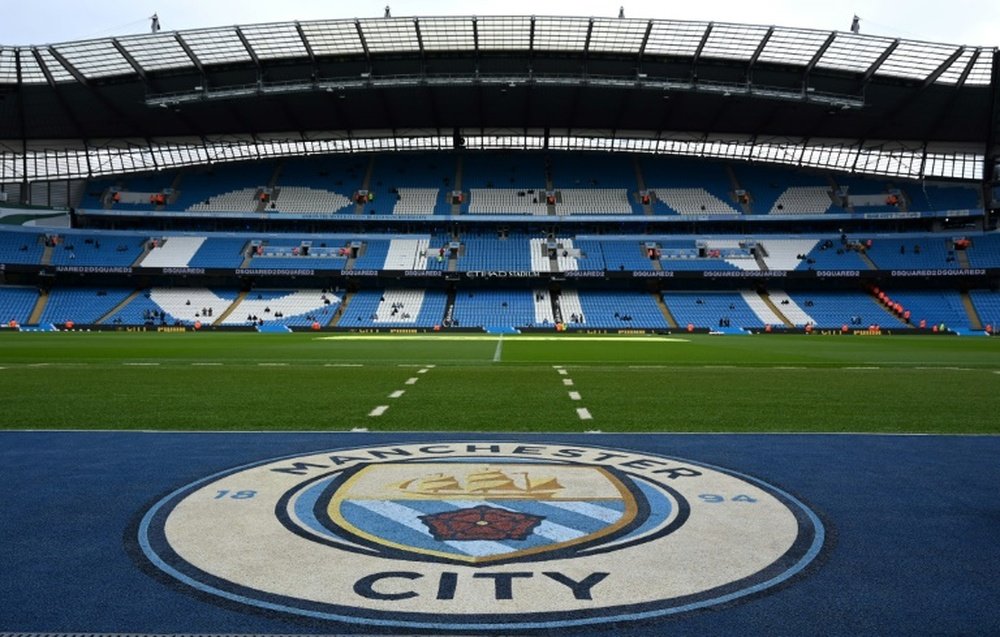
No sportswashing in this world
Last edited:
Along with crime organisations not holding some clubs... If only.No sportswashing in this world
FC Roma
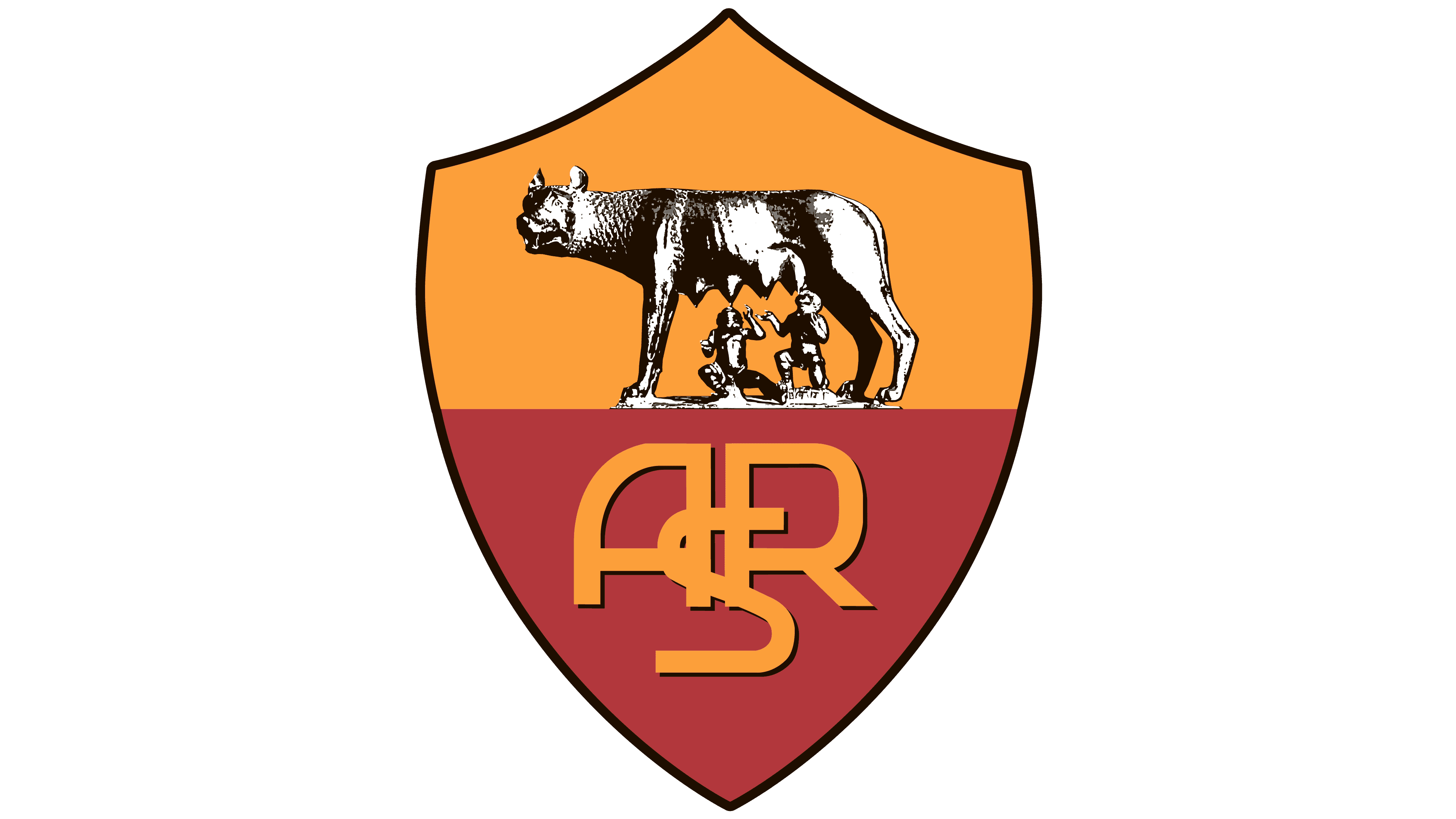
This logo, but replace the AS with FC
Name: Football Club di Roma
City: Rome
Nickname: Il Giallorossi (the yellow and red)
Home ground: Stadio Olimpico
Attendance: 70,634
League: Serie A
HONORS
DOMESTIC
Serie A: 1935-1936, 1941-1942, 1980-1981, 1982-1983, 1983-1984, 2000-2001, 2005-2006, 2007-2008, 2009-2010, 2016-2017
Coppa Italia: 1940-1941, 1946-1947, 1979-1980, 1980-1981, 1983-1984, 1990-1991, 2006-2007,
EUROPEAN:
European Cup/Champions League: 1983-1984, 2008-2009
UEFA Cup: 1960-1961
Football Club di Roma opened in 1901 as a sports club, with the football side starting two years later, spending their first years competing in the lazio region's league.

In 1912, the lazio region and southern clubs were admitted in the national championship system, and Roman were right in the middle of one of the toughest regional leagues, with clubs like Lazio, Audace and Fortitudo often proving too much for them.
The breakthrough came in 1914-1915, when Roman defeated Lazio 5-2 and headed towards the national finals, but they would lose to an upstart club from the north in Juventus.

A photo of FC Roma's earliest years
Following several competitive years, Roman would hit a slump in the 1920s, culminating in relegation to 1 divizione, the precursor to serie B. Struggles to gain promotion followed, but they would be on the receiving end of a gift by the gods in the most unexpected of manners.
In protest against the amount of foreigners employed by the richer clubs, several clubs, including Audace Roma, Fortitudo Roma and Alba Roma, would switch to Rugby [1]. This meant that the top football players of those clubs would switch to FC Roma, including future captain and club legend atillio Ferraris, which would lead roma back to the newly baptized Serie A in 1929. That, combined with the revenue generated from attendance at the new home stadium in the working class neighborhood of Testaccio, would give Roma the means to compete for the scudetto, rounding the squad with the likes of goalkeeper Guido Massetti, striker Rodolfo Volk and midfielder from Lazio Fulvio Bernardini.

The new look FC Roma would make a big splash, becoming runner up to the metodo juventus of monti and orsi in 1931 and competing in the top half of the table before finally winning their first ever scudetto in 1935-1936. However, the aging squad and departure of manager Luigi Barbesino meant Roma went through inconsistent form in the next few years.
Again, luck would be on Roma's side heading into the next decade, for the Nazi invasion of France, which kickstarted the second world war, meant that Roma managed to acquire Olympique de Marseille's Morrocan genius Larbi Ben Barek as the club's third foreigner alongside Albanian Naim Kriezu and Argentine Miguel Angel Panto, with Ben Barek slotting behind star striker Amedeo Amadei as the number 10. Also, the club would move to the Stadio Nazionale, alongside Lazio.
Also arriving was former Austrian expatriate Alfred Shaffer, who moved away to the United States after Austria-Hungary's fall in world war 1, becoming both a star player and honing his managing skills in the ASL before FC Roma called him.

Larbi Ben Barek, the genius

Amedeo Amadei, one of the best strikers of his generation
With that squad and manager, Roma would win their first ever coppa Italia in 1941 before winning their second scudetto in 1942. After that season, league form would fall down a bit, and despite a second coppa italia win in 1947, Roma would suffer relegation in 1951 before going straight back up with the coaching of giuseppe viani and stars like Dino Da Costa, Helge Bronee and egisto pandolfini, as well as moving into their current home, the Stadio Olimpico.
Their best finish of this period was under the management of Englishman Jesse Carver, when in 1954–55, they finished as runners-up after Udinese, who originally finished second, were relegated for corruption. Although Roma were unable to break into the top four during the following decade, they did achieve some measure of cup success. Their first honour outside of Italy was recorded in 1960–61 when Roma won the Inter-Cities Fairs Cup by defeating Birmingham City 4–2 in the finals.
Their lowest point came during the 1964–65 season, when manager Juan Carlos Lorenzo announced the club could not pay its players and was unlikely to be able to afford to travel to Vicenza to fulfil its next fixture. Supporters kept the club going with a fundraiser at the Sistine Theatre and bankruptcy was avoided with the election of a new club president Franco Evangelisti. In more positive news, Giacomo Losi set a Roma appearance record in 1969 with 450 appearances in all competitions, a record that would last 38 years.
During much of the 1970s, Roma's appearance in the top half of Serie A was sporadic. The best place the club were able to achieve during the decade was third in 1974–75. Notable players who turned out for the club during this period included midfielders Giancarlo De Sisti and Francesco Rocca.

Niels Liedholm
The dawning of a newly successful era in Roma's footballing history was brought in when AC Milan's former star Nils Liedholm would be appointed manager in 1979. With homegrown talents agostino di bartolomei, franco tancredi and club icons Roberto Pruzzo and Bruno Conti, as well as the transfers of brazilian internatioanls Toninho Cerezo and Paulo Falcao and Parma's young midfielder Carlo Ancelotti, Liedholm would bring Roma their first trophy in decades by beating Torino on penalties to win the coppa italia for the third time. A year later, with the arrival of homegrown products Aldo Bonetti and Sebastiano Nela, Roberto Dinamite from a failed season at Barcelona, Michele Nappi from Perugia and Aldo Maldera from Milan, along with top contenders Juventus, Milan and crosstown rivals Lazio being relegated to Serie B following the impact of the Totonero scandal, the club would achieve their first ever domestic double, their first scudetto in almost 40 years.
Following a post-title hangover in 1981-1982, Liedholm would proceed with the signing of title winners Fiorentina's young defensive stalwart Pietro Vierchowod to partner Di Bartolomei. With this squad in tow, Roma would win the scudetto again in 1982-1983, on a dramatic final match against recently-returned Juventus.
1983-1984 is seen as FC Roma's greatest ever season. First, they defended their scudetto in an insanely competitive serie A featuring Paltini's Juve, Rummenige and Belloumi's Inter, Socrates and Antognoni's Fiorentina, Zico's Udinese and Gigi Radice's Torino.
Then, they defeated the likes of Milan, Torino and Hellas Verona to win the coppa italia. And, finally, the piece de resistance, their incredible 1983-1984 parcours to the european cup. In the semi-final, Roma overcame a 3-1 deficit to Dundee United before defeating Ian Rusha nd Mochael Laudrup's Liverpool on penalties at home in the final to win their first european cup and complete a legendary treble!

Fc Roma's 1983-1984 Treble team
A subsequent retooling of the squad soon followed, with Giuseppe Giannini tajing over from Conti and the milan-bound Ancelotti, while germans Thomas Berthold and Rudi Voller in the late 80s would replace Di Bartolomei and Dinamite, respectively.
While Liedholm would retire from club management to coach the swedish national team to great success in the early-to-mid 90s, Former Sampdoria coach Vujadin Boskov would successfully guide the club to two cup finals in 1990-1991 with Thomas Hassler joining Voller and new foreign center back Aldair (Berthold left for Torino in that same off-season), losing the UEFA Cup final to inter in 1991, but winning the coppa italia that same year.
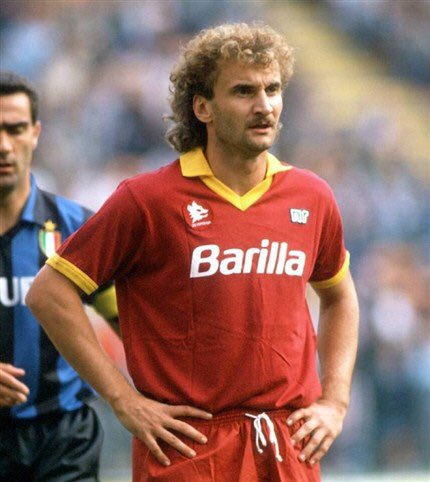
Rudi Voller in the 1991 UEFA Cup final
After a middling 1993-1994 season where roma barely lost out on the last available european place, Boskov was sacked and veteran manager Carlo Mazzone was hired. To replace leverkusen-bound Rudi Voller and Torino-bound Ruggiero Rizzitelli, Mazzone trusted in Udinese's Abel Balbo and a young product from.the academy: a teenager named Francesco Totti.

You'll hear a lot from him
Despite the emerging brilliance of Totti and Balbo, as wella s other young talents such as Luigi di Biaggio, Dammiano Tomassi, Cafu, Carlo Cudicini and Marco Del Vecchio, Roma always finished behind Lazio in the mid-90s, and would suffer a heartbreaking defeat agaisnt Slavia Prah in the return leg of their UEFA Cup tie in 1995-1996.
Eager for a change, the club pulled off a major coup by bringing in Lazio's manager Zdenek Zeman in 1997. Zeman's decision to sell Giannini and build his entire team around Totti would prove fruitful, as Roma would thrive under Zeman's offensive style and finish in 4th place, in front of Lazio for the first time in the 90s, but they would finish behind them in 4th place in 1998-1999.
Zeman's offensive style pleased the crowd, but it left their defense to be very leaky. Roma sought to change that, for they replaced Zeman with Fabio Capello, the disgraced champions league-winning Milan coach who returned from his sabbatical to mamage Roma.
The signing of Vicenzo Montella from Sampdoria added more firepower alongside Totti, but it was the defensive signings that caught the attention, with the bakc three of aldair, Christian Panucci and Marco Lanna solidified the defense, leaking only 20 goals as Roma ended up in 4th once again.
The year 2000 would see two players that will finally put Roma over the top. First, teh signing of argentina's top defensive prospect Walter Samuel to partner Aldair and Panucci in the back three, while in a massove twist to the transfer market, Roma surprisingly went for cash-strapped Fiorentina's star striker Gabriel Batistuta for $42 million, still the most expensive over-30 signing in history.
2000-2001 would see Roma in a three-way title fight against Juventus and Lazio. The competition was fierce until a crucial derby win over Lazio with Montella scoring the winning goal, before the final matchday, where an easy 3-0 win over Parma at home clinched Roma's first scudetto since the 1983-1984 treble!
:no_upscale()/cdn.vox-cdn.com/uploads/chorus_image/image/66501337/1198368512.jpg.0.jpg)
After the legendary victory parade, FC Roma entered the 2001-2002 season as favorites, especially with the world record $53 million signing of Parma's goalkeeper Gianluigi Buffon. Sadly, their season would end in heartbreaking fashion, for Roma would lsoe the title on the last day to Ronaldo's Inter, while they would go all the way to the Champions League Final, where thwy would sink to Zinedine Zidane's Captain Tsubasa-esque volley 2-1 against Real Madrid.
Roma would then suffer another heeartbreaking loss the following year, ans they failed to cathc up to the surprise Scudetto winners Chievo Verona in 2002-2003, while they would falter in the UEFA Cup against AC Milan. That same Milan team would beat Roma to the Scudetto in 2003-2004. The subsequent departures of Cafu, Samuel, Di Biaggio and Cristiano Zanetti to offset the momey spent on Batistuta and Buffon, along with another (retroactive) runner up finish in 2005 to Inter put soem doubts as to Roma's ability to win again
All that was needed was anee manager, Luciano Sapletti, and new, cheap players such as Mancini, Simone Perrotta, Matteo Brighi, Phillipe Mexes, Christain Chivu, Samuel Kuffour and youth products Daniele De Rosis and Alberto Aquilaini to bring Roma back to the top, winning the 2006 Serie A, with Buffon being named best goalkeeper in the world by l'équipe.
Despite Totti's peak goalscoring season with 26 goals, Roma lost both 2006-2007 scudetto to Inter and were eliminated in the semi-final of the european cup to Lyon, Roma would end up winning the coppa in that same year, before bouncing back and winning again in 2007-2008, while they would lose to Marseille in the cup winners cup semi-final that same year.
2008-2009 would see FC Roma, at the peak of spalletti's squad's powers, finally go all the way to the champions league final, where they faced Sven-Goran Eriksson and wayne rooney's Manchester United, who won the competition the year prior against West Ham. With two francesco totti goals, Roma won their second ever european cup. In the league, however, they would lose the scudetto to Jose Mourinho's miraculous Genoa side
The following season, Roma would bring the scudetto back to the capital on the last day agaisnt Genoa, but they would bow out in the quarter-finals of the champions league against Barcelona.
2010-2011 would see Roma bow out in the champions league quarter finals against bayern, while they would bow out to palermo in the league. Retooling years would follow as aging contributors such as brighi, perrotta, Aquilaini, Chivu and Mirko Vucinic are phased out, with new talents such as alessandro florenzi, Emerson Palmieri, miralem pjanic, kevin strootman, radja nainggolan, Kostas Manolas and Marquinhos joins the ageless wonders Buffon, De Rossi and Totti.
The addition of brazilian goalkeeper and chosen successor to Buffon in Allison Becker, Milan's Stephan El Sharaawy and Borussia Dortmund's striker Edin Dzeko completed Roma's squad, forcing Totti to play more as a trequartista behind Dzeko. In a tense title race, Roma took the fight to Juventus and Napoli, with the insane pace never letting up until the final day, where FC Roma won its tenth Scudetto and Totti and Buffon's final title before putting an end to their illustrious careers.
Luciano Spalletti would also leave the club after 12 years managing it to join Inter Milan and Napoli, where he would win the scudetto once again at the latter club in 2023.
Fun fact: Francesco Totti, FC Roma's greatest ever player and its illustirous capitano, was the key player to HALF of FC Roma's scudettos!
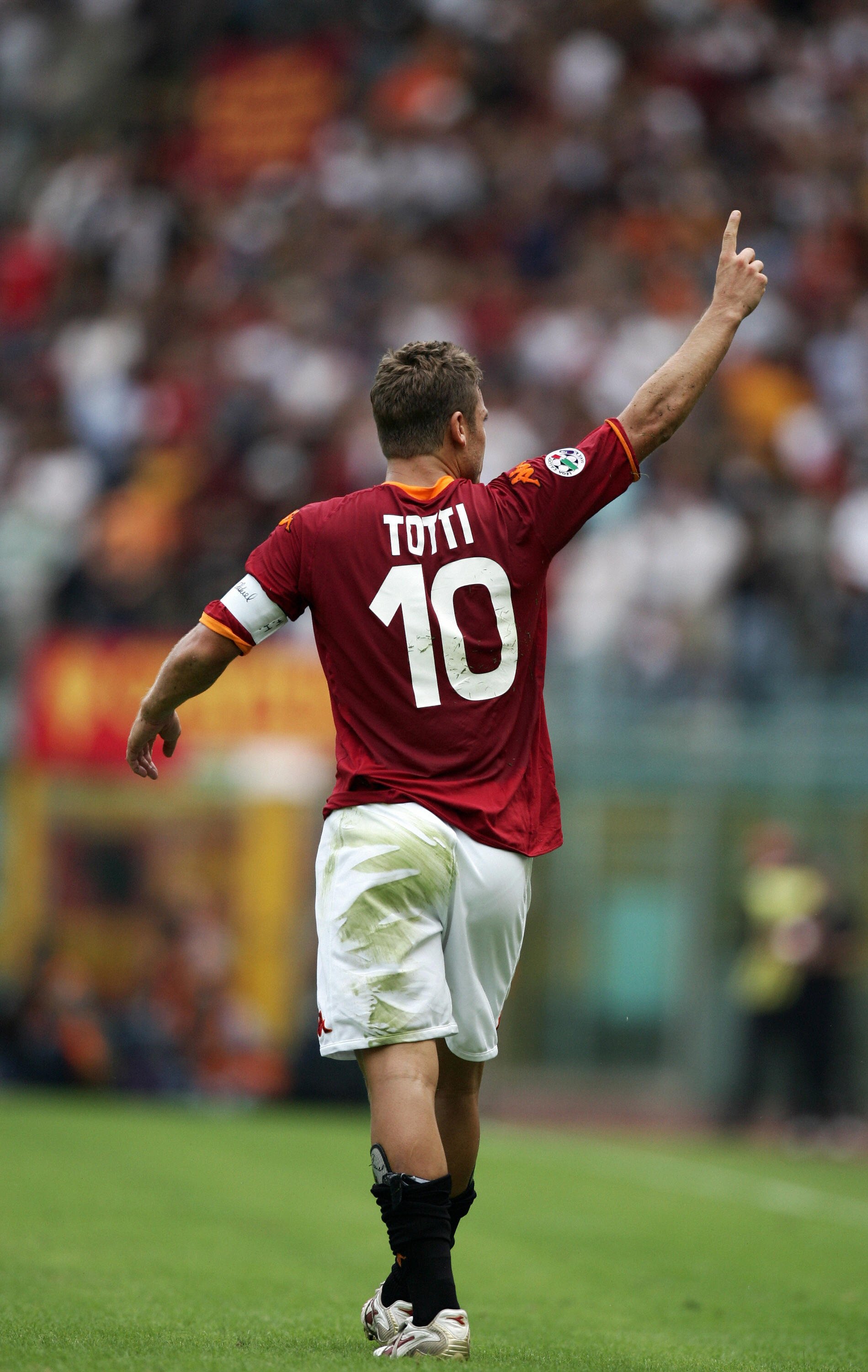
forever the true GOAT
And now, with a new squad featuring the likes of Allisson, Florenzi, Palmieri and Marquinhos along with new talents such as Bryan Cristante, Nicolo Zaniolo, Lorenzo Pellegrini, Rick Karsdorp Patrick Schick, Gianluca Mancini and Marco Tuminello, Roma are still going strong, regularly reaching the final four of the UEFA Cup and even reaching the final in 2023, losing to Luis Alberto and Julen Lopetegui's Sevilla on penalties.
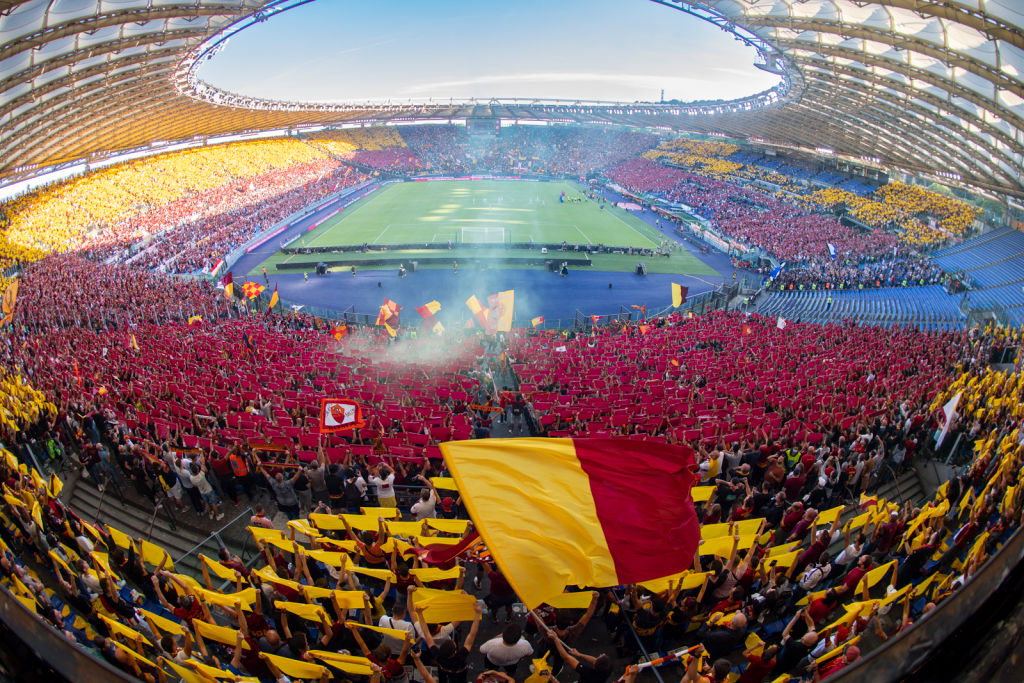
[1] IRL, AS Roma was a merger of the four top roman clubs forced upon by the fascist party. Here, with rugby turning professional in 1893 woth the vote being for professionalisation in my world, along with other stuff happening in italy, things are...a bit different
Last edited:
One of the clubs I'll be unintentionally mentioning for one of my next Wikis. Fun fact, Hajduk Split won against them back in 1937, which was supposed to be a propaganda win for the Italians, it ended up being an embarrassment. The players of Roma even gave Hajduk's players a statue of the Roman wolf, claiming "The symbol of the old and new empire!"
This logo, but replace the AS with FC
Name: Football Club di Roma
City: Rome
Nickname: Il Giallorossi (the yellow and red)
Home ground: Stadio Olimpico
Attendance: 70,634
League: Serie A
HONORS
DOMESTIC
Serie A: 1935-1936, 1941-1942, 1980-1981, 1982-1983, 1983-1984, 2000-2001, 2005-2006, 2007-2008, 2009-2010, 2016-2017
Coppa Italia: 1940-1941, 1946-1947, 1979-1980, 1980-1981, 1983-1984, 1990-1991, 2006-2007,
EUROPEAN:
European Cup/Champions League: 1983-1984, 2008-2009
UEFA Cup: 1960-1961
Football Club di Roma opened in 1901 as a sports club, with the football side starting two years later, spending their first years competing in the lazio region's league.

In 1912, the lazio region and southern clubs were admitted in the national championship system, and Roman were right in the middle of one of the toughest regional leagues, with clubs like Lazio, Audace and Fortitudo often proving too much for them.
The breakthrough came in 1914-1915, when Roman defeated Lazio 5-2 and headed towards the national finals, but they would lose to an upstart club from the north in Juventus.

A photo of FC Roma's earliest years
Following several competitive years, Roman would hit a slump in the 1920s, culminating in relegation to 1 divizione, the precursor to serie B. Struggles to gain promotion followed, but they would be on the receiving end of a gift by the gods in the most unexpected of manners.
In protest against the amount of foreigners employed by the richer clubs, several clubs, including Audace Roma, Fortitudo Roma and Alba Roma, would switch to Rugby [1]. This meant that the top football players of those clubs would switch to FC Roma, including future captain and club legend atillio Ferraris, which would lead roma back to the newly baptized Serie A in 1929. That, combined with the revenue generated from attendance at the new home stadium in the working class neighborhood of Testaccio, would give Roma the means to compete for the scudetto, rounding the squad with the likes of goalkeeper Guido Massetti, striker Rodolfo Volk and midfielder from Lazio Fulvio Bernardini.
the 1930s FC Roma team, in the first game at Campo Testaccio
The new look FC Roma would make a big splash, becoming runner up to the metodo juventus of monti and orsi in 1931 and competing in the top half of the table before finally winning their first ever scudetto in 1935-1936. However, the aging squad and departure of manager Luigi Barbesino meant Roma went through inconsistent form in the next few years.
Again, luck would be on Roma's side heading into the next decade, for the Nazi invasion of France, which kickstarted the second world war, meant that Roma managed to acquire Olympique de Marseille's Morrocan genius Larbi Ben Barek as the club's third foreigner alongside Albanian Naim Kriezu and Argentine Miguel Angel Panto, with Ben Barek slotting on the left of star striker Amedeo Amadei. Also, the club would move to the Stadio Nazionale, alongside Lazio.
Also arriving was former Austrian expatriate Alfred Shaffer, who moved away to the United States after Austria-Hungary's fall in world war 1, becoming both a star player and honing his managing skills in the ASL before FC Roma called him.

Larbi Ben Barek, the genius

Amedeo Amadei, one of the best strikers of his generation
With that squad and manager, Roma would win their second coppa Italia in 1941 before winning their second scudetto in 1942. After that season, league form would fall down a bit, and despite a third coppa italia win in 1947, Roma would suffer relegation in 1951 before going straight back up with the coaching of giuseppe viani and stars like Dino Da Costa, Helge Bronee and egisto pandolfini, as well as moving into their current home, the Stadio Olimpico.
Their best finish of this period was under the management of Englishman Jesse Carver, when in 1954–55, they finished as runners-up after Udinese, who originally finished second, were relegated for corruption. Although Roma were unable to break into the top four during the following decade, they did achieve some measure of cup success. Their first honour outside of Italy was recorded in 1960–61 when Roma won the Inter-Cities Fairs Cup by defeating Birmingham City 4–2 in the finals.
Their lowest point came during the 1964–65 season, when manager Juan Carlos Lorenzo announced the club could not pay its players and was unlikely to be able to afford to travel to Vicenza to fulfil its next fixture. Supporters kept the club going with a fundraiser at the Sistine Theatre and bankruptcy was avoided with the election of a new club president Franco Evangelisti. In more positive news, Giacomo Losi set a Roma appearance record in 1969 with 450 appearances in all competitions, a record that would last 38 years.
During much of the 1970s, Roma's appearance in the top half of Serie A was sporadic. The best place the club were able to achieve during the decade was third in 1974–75. Notable players who turned out for the club during this period included midfielders Giancarlo De Sisti and Francesco Rocca.

Niels Liedholm
The dawning of a newly successful era in Roma's footballing history was brought in when AC Milan's former star Nils Liedholm would be appointed manager in 1979. With homegrown talents agostino di bartolomei, franco tancredi and club icons Roberto Pruzzo and Bruno Conti, as well as the transfers of brazilian internatioanls Toninho Cerezo and Paulo Falcao and Parma's young midfielder Carlo Ancelotti, Liddholm would bring Roma their first trophy in decades by beating Torino on penalties to win the coppa italia for the third time. A year later, with the arrival of homegrown products Aldo Bonetti and Sebastiano Nela, Roberto Dinamite from a failed season at Barcelona, Michele Napoi from Perugia and Aldo Maldera from Milan, along with top contenders Juventus, Milan and crosstown rivals Lazio being relegated to Serie B following the impact of the Totonero scandal, the club would achieve their first ever domestic double, their first scudetto in almost 40 years.
Following a post-title hangover in 1981-1982, Liedholm would proceed with the signing of title winners Fiorentina's young defensive stalwart Pietro Vierchowod to partner Di Bartolomei. With thsi squad in tow, Roma would win the scudetto again in 1982-1983, on a dramatic final match against recently-returned Juventus.
1983-1984 is seen as FC Roma's greatest ever season. First, they defended their scudetto in an insanely competitive serie A featuring Paltini's Juve, Rummenige and Belloumi's Inter, Socrates and Antognoni's Fiorentina, Zico's Udinese and Gigi Radice's Torino.
Then, they defeated the likes of Milan, Torino and Hellas Verona to win the coppa italia.
And, finally, the piece de resistance, their incredible parcours to the european cup. In the semi-final, they lost to dundee united 2-0 in the first leg, while the second leg wasn't without controversy. Before the game even started, Dundee United ordered UEFA to change the referee for thr match, sensing some foul play going on behind the scenes. In the end, UEFA changed the referee at the last minute so that there would be no foul play, especially after the totonero scandal a few years earlier.
This was all for nought, as Roma ended up completing an insane comeback to win the tie 3-2 and head to the final, where they will play at home agaisnt Liverpool.
In a sold put stadio olimpico, the game was close all the eay to the end, with both teams's stars delivering excellent performances...yet the match ended in a 1-1 draw after extra time, forcing penalties.
Roberto Dinamite doesn't budge agaisnt Bruce Grobelaar's unusual distractions and clamly slots it in, while Michael Laudrup would have his penalty blocked by Tancredi, and Ancelotti would slot it home to tie it up. After Ronnie Whelan missed his penalty, Paulo Falcao calmly slots in his to give Roma its first european cup and complete a historic Treble at home!!

Fc Roma' 1983-1984 treble team
Sadly, the attempt to run it back would fail
The following season, for Roma would suffer a hangover in serie A and be eliminated by eventual winners Bordeaux in the semi-finals.
A subsequent retooling of the swaud followed, with Giuseppe Giannini taming over from Conti and the milan-bound Ancelotti, while germans Thoams Berthold and Rudi Voller in the late 80s would replace Di Bartolomei and Dinamite, respectively.
While Liedholm would retire from club management to coach the swedish national team to great success in the early-to-mid 90s, Former Sampdoria coach Vujadin Boskov would successfully guide the club to two cup finals in 1990-1991 with Thomas Hassler joining Voller and new foreign center back Aldair while Berthold would leave for VFB Stuttgart, losing the UEFA Cup final to inter in 1991, but winning the coppa italia that same year. However, they would lose to eventual winners Nottingham Forrest and brian clough in the 1992 cup winners cup semi-finals.

Rudi Voller in the 1991 UEFA Cup final
After a middling 1993-1994 season where roma barely lost out on the last available european place, Boskov was sacked and veteran manager Carlo Mazzone was hired. To replace leverkusen-bound Rudi Voller and Torino-bound Ruggiero Rizzitelli, Mazzone trusted in Udinese's Abel Balbo and a young product from.the academy: a teenager named Francesco Totti.

You'll hear a lot from him
Despite the emerging brilliance of Totti and Balbo, as wella s other young talents such as Luigi di Biaggio, Dammiano Tomassi, Cafu, Carlo Cudicini and Marco Del Vecchio, Roma always finished behind Lazio in the mid-90s, and would suffer a heartbreaking defeat agaisnt Slavia Prah in the return leg of their UEFA Cup tie in 1995-1996.
Eager for a change, the club pulled off a major coup by bringing in Lazio's manager Zdenek Zeman in 1997. Zeman's decision to sell Giannini and build his entire team around Totti would prove fruitful, as Roma would thrive under Zeman's offensive style and finish in 4th place, in front of Lazio for the first time in the 90s, but they would finish behind them in 4th place in 1998-1999.
Zeman's offensive style pleased the crowd, but it left their defense to be very leaky. Roma sought to change that, for they replaced Zeman with Fabio Capello, the disgraced champions league-winning Milan coach who returned from his sabbatical to mamage Roma.
The signing of Vicenzo Montella from Sampdoria added more firepower alongside Totti, but it was the defensive signings that caught the attention, with the bakc three of aldair, Christian Panucci and Marco Lanna solidified the defense, leaking only 20 goals as Roma ended up in 4th once again.
The year 2000 would see two players that will finally put Roma over the top. First, teh signing of argentina's top defensive prospect Walter Samuel to partner Aldair and Panucci in the back three, while in a massove twist to the transfer market, Roma surprisingly went for cash-strapped Fiorentina's star striker Gabriel Batistuta for $42 million, still the most expensive over-30 signing in history.
2000-2001 would see Roma in a three-way title fight against Juventus and Lazio. The competition was fierce until a crucial derby win over Lazio with Montella scoring the winning goal, before the final matchday, where an easy 3-0 win over Parma at home clinched Roma's first scudetto since the 1983-1984 treble!
:no_upscale()/cdn.vox-cdn.com/uploads/chorus_image/image/66501337/1198368512.jpg.0.jpg)
After the legendary victory parade, FC Roma entered the 2001-2002 season as favorites, especially with the world record $53 million signing of Parma's goalkeeper Gianluigi Buffon. Sadly, their season would end in heartbreaking fashion, for Roma would lsoe the title on the last day to Ronaldo's Inter, while they would go all the way to the Champions League Final, where thwy would sink to Zinedine Zidane's Captain Tsubasa-esque volley 2-1 against Real Madrid.
Roma would then suffer another heeartbreaking loss the following year, ans they failed to cathc up to the surprise Scudetto winners Chievo Verona in 2002-2003, while they would falter in the UEFA Cup against AC Milan. That same Milan team would beat Roma to the Scudetto in 2003-2004. The subsequent departures of Cafu, Samuel, Di Biaggio and Cristiano Zanetti to offset the momey spent on Batistuta and Buffon, along with another (retroactive) runner up finish in 2005 to Inter put soem doubts as to Roma's ability to win again
All that was needed was anee manager, Luciano Sapletti, and new, cheap players such as Mancini, Simone Perrotta, Matteo Brighi, Phillipe Mexes, Christain Chivu, Samuel Kuffour and youth products Daniele De Rosis and Alberto Aquilaini to bring Roma back to the top, winning the 2006 Serie A, with Buffon being named best goalkeeper in the world by l'équipe.
Despite Totti's peak goalscoring season with 26 goals, Roma lost both 2006-2007 scudetto to Inter and were eliminated in the semi-final of the european cup to Lyon, Roma would end up winning the coppa in that same year, before bouncing back and winning again in 2007-2008, while they would lose to Marseille in the cup winners cup semi-final that same year.
2008-2009 would see FC Roma, at the peak of spalletti's squad's powers, finally go all the way to the champions league final, where they faced Sven-Goran Eriksson and wayne rooney's Manchester United, who won the competition the year prior against West Ham. With two francesco totti goals, Roma won their second ever european cup. In the league, however, they would lose the scudetto to Jose Mourinho's miraculous Genoa side
The following season, Roma would bring the scudetto back to the capital on the last day agaisnt Genoa, but they would bow out in the quarter-finals of the champions league against Barcelona.
2010-2011 would see Roma bow out in the champions league quarter finals against bayern, while they would bow out to palermo in the league. Retooling years would follow as aging contributors such as brighi, perrotta, Aquilaini, Chivu and Mirko Vucinic are phased out, with new talents such as alessandro florenzi, Emerson Palmieri, miralem pjanic, kevin strootman, radja nainggolan, Kostas Manolas and Marquinhos joins the ageless wonders Buffon, De Rossi and Totti.
The addition of brazilian goalkeeper and chosen successor to Buffon in Allison Becker, Milan's Stephan El Sharaawy and Borussia Dortmund's striker Edin Dzeko completed Roma's squad, forcing Totti to play more as a trequartista behind Dzeko. In a tense title race, Roma took the fight to Juventus and Napoli, with the insane pace never letting up until the final day, where FC Roma won its tenth Scudetto and Totti and Buffon's final title before putting an end to their illustrious careers.
Luciano Spalletti would also leave the club after 12 years managing it to join Inter Milan and Napoli, where he would win the scudetto once again at the latter club in 2023.
Fun fact: Francesco Totti, FC Roma's greatest ever player and its illustirous capitano, was the key player to HALF of FC Roma's scudettos!

forever the true GOAT
And now, with a new squad featuring the likes of Allisson, Florenzi, Palmieri and Marquinhos along with new talents such as Bryan Cristante, Nicolo Zaniolo, Lorenzo Pellegrini, Rick Karsdorp Patrick Schick, Gianluca Mancini, Marco Tuminello and Paulo Dybala, Roma are still going strong, regularly reaching the final four of the UEFA Cup and even reaching the final in 2023, losing to Luis Alberto and Julen Lopetegui's Sevilla on penalties.

[1] IRL, AS Roma was a merger of the four top roman clubs forced upon by the fascist party. Here, with rugby turning professional in 1893 woth the vote being for professionalisation in my world, along with other stuff happening in italy, things are...a bit different
SS Lazio
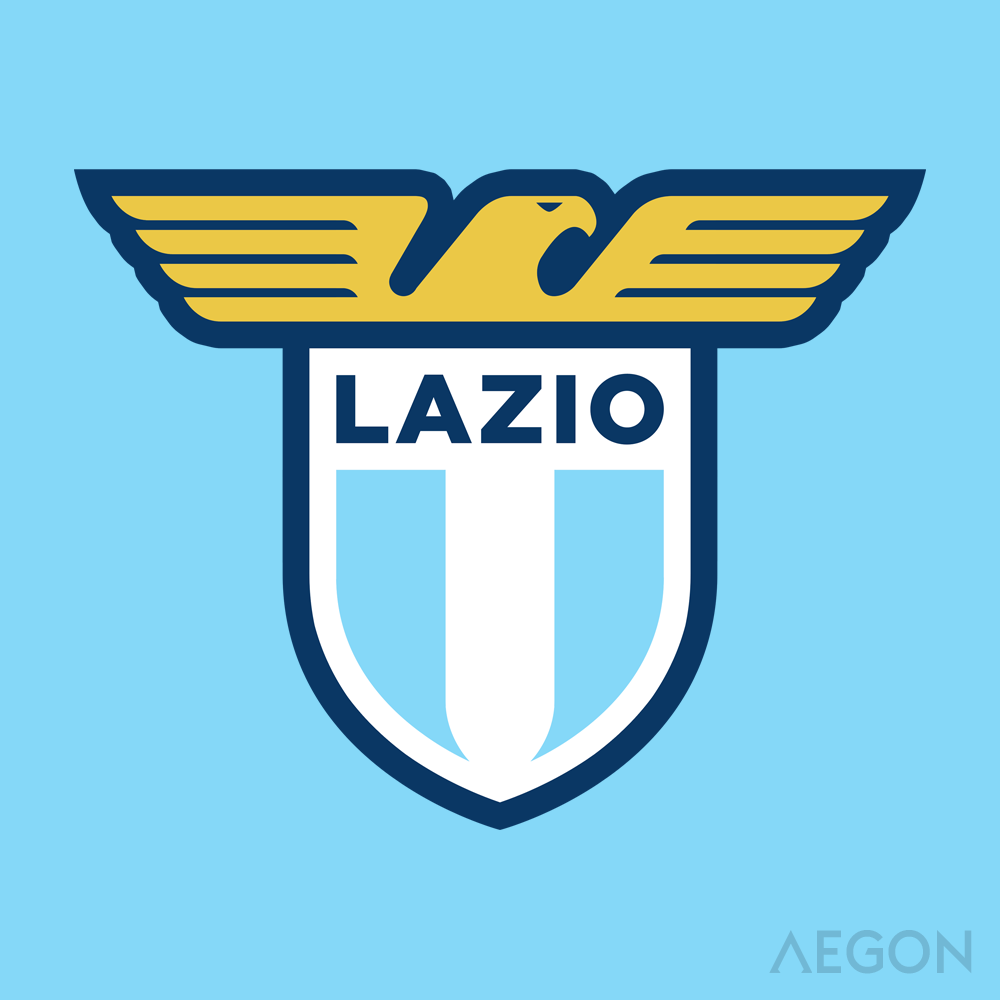
Name: Lazio Athletic Club
City: Rome
Venue: Stadio Olimpico
Attendance: 70,634
Nickname: Il Biancocelesti (the white and sky blues), Le Aquile (the Eagle)
League: Serie A
HONORS
DOMESTIC
Serie A/National championship: 1913-1914, 1914-1915, 1936-1937, 1972-1973, 1973-1974, 1999-2000
Coppa Italia: 1934-1935, 1957-1958, 1997-1998, 2003-2004, 2012-2013
EUROPEAN
Cup Winners Cup: 1998-1999
UEFA Supercup: 1999
Società Podistica Lazio, or Lazio Athletics Club, was founded on 9 January 1900 in the Prati rione of Rome, making it the oldest Roman football team currently active. Wanting to encompass more than just the city of Rome, the club's nine original founding members chose to name the club Lazio, the same name as the region where the city of Rome was built. The primary colour of sky blue was chosen as a tribute to ancient Greece and pays homage to the advent of the modern Olympic Games.
The club's first ever match came in 1902 against Virtus, a match considered, albeit unofficially, the first Rome Derby. That match was played at Piazza d'Armi, near Piazza Mazzini, and Lazio duly won 3–0 with a hat-trick from centre-forward Sante Ancherani.
In 1907, the Italian Football Federation (FIGC) sponsored a Roman championship called I Categoria, which Lazio won, defeating early rivals Virtus in the final. Nonetheless, they were not invited into any national championship despite their success.

After this friendly football activity, Lazio officially gave birth to its football section in 1910 and joined official league competition in 1912 as soon as the FIGC began organising championships in the centre and south of Italy. Lazio reached the national final three times, winning back to back in 1913 and 1914 against Pro Vercelli and Casale, respectively, but losing the 1923 final to Bologna.

When FIGC launched its first national league system in 1926, Lazio started from the Prima Divisione, the forerunner of present-day Serie B.
The club played in the first organised Serie A in 1929 and made their league debut on 6 October 1929, defeating Bologna 3–0 at the Rondinella ground on Via Flaminia. However, the inaugural championship was less than brilliant for Lazio, who on the final day managing a meagre 15th-placed finish.
Lazio also had a considerable Brazilian influence in their early Serie A years, known as "Brasilazio", with the club employing lots of Brazilian talent. Their coach of the day, Amílcar Barbuy, was the first Brazilian to become involved with Italian football. However, this did not bring them success, as they finished eighth in 1930–31 and 13th in 1931–32.

Brasilazio
In the summer of 1932, Barbuy was replaced by an Austrian coach, Karl Stürmer, and he led the club to their first eve win in a Rome Derby, beating the giallorossi 2–1 at home. Two-straight tenth-placed finishes under Stürmer saw him replaced by compatriot Walter Alt in 1934. His arrival also coincided with that of Silvio Piola. Piola went on to become a legend of Lazio, the highest goalscorer in Serie A history.
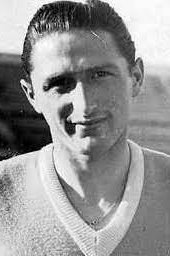
Led by the legendary striker Piola, Lazio achieved their first coppa italia triumph in that same season, 1934-1935, and then won the scudetto in 1937. The coach that season was Hungarian József Viola. They also competed in European competition for the first time, losing in the final of the Central European Cup against Ferencváros.
Lazio rounded out the decade with a memorable away derby win by 2–0 at the Campo Testaccio in 1939 and a solid fourth-placed finish in 1940.
This particular decade was dominated by Il Grande Torino, and Lazio could achieve no better than mid-table finishes. The 1948–49 season was a difficult one for the biancocelesti, as players were reduced to the minimum wage and several went on strike. They finished 13th, although they recovered the following season to record an impressive fourth-placed finish, made even sweeter by the difficulties of the previous year and the miserable campaign of Roma, who once again narrowly avoided the drop to Serie B.
In 1958, Lazio won its second ever Coppa Italia title. First, the club had topped their group of four, consisting of Palermo, Napoli and rivals Roma, before eliminating Marzotto and Juventus on the road to the final, where they met Fiorentina, Led by coach Fulvio Bernardini. Lazio beat la Viola 1–0 with a goal from striker Maurilio Prini, who had ironically just left Fiorentina.

Unfortunately, the 60s would be a disastrous decade for Lazio, for they would be releagted in 1964 and would wait until the early 70s to get back to the top flight.
Upon their return to Serie A, Lazio build a resilient squad featuring the likes of captain Giuseppe Wilson on defense, Luciano Re Cecconi and Mario Frustalupi in midfield and the duo of Giorgio Chinaglia and rome-born argentine Delio Onnis. Together, Lazio would emerge as the surprise champions of Serie A in 1972-1973, beating Nereo Rocco's Milan and a young Juventus side for their first scudetto in decades. This would be followed by a dominant 1973-1974 campaign where they led from start to finish to go back-to-back.

Lazio's back-to-back scudetto winners in the 70s
Unfortunately, this success was not build upon, as Onnis left to join Monaco in the french league and midfielder Luciano Re Cecconi and coach tommasso maestrelli tragically died in 1976. The bottom of the barrell was hit when Lazio were forcibly relegated to Serie B following the Totonero scandal, and they would become a yo-yo club for much of the 80s before finally returning to Serie A for good in 1988 and stabilising themselves there.
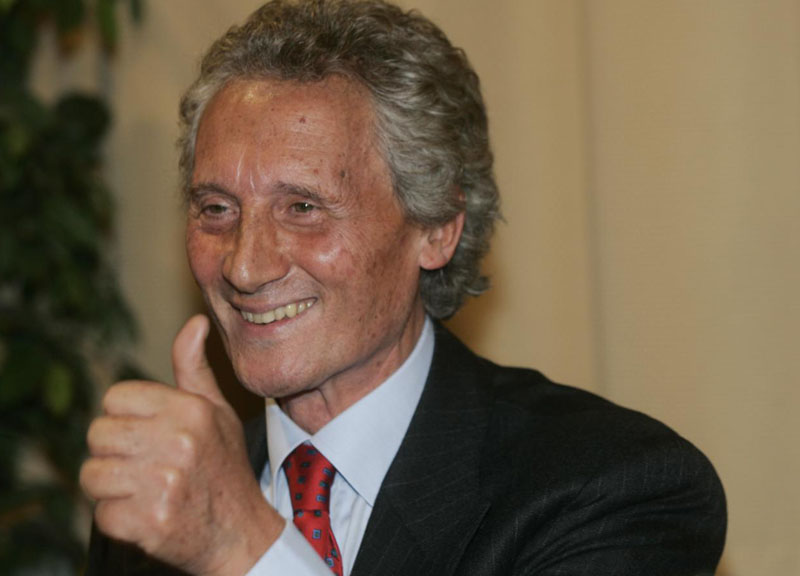
In 1992, Food bank businessman Sergio Cragnotti bought the club and invested in it, joining the spending frenzy of Serie A at the time as the league, the best in the world in those times, outbid each other to acquire the world's best players. Diego Fuser from Fiorentina, Aaron Winter from Ajax and Giuseppe Signori from the surprise 5th place finishers Foggia were Cragnotti's first signings, followed by Paolo Nero in 1993, Jose Chamot in 1994, Alen Boksic as a free agent from Hajduk Split in 1995 and czech manager Zdenek Zeman in that same year, joining homegrown talents such as goalies Valerio Fiore and Flavio Roma, Giuseppe Favalli, Roberto Di Matteo and Alessandro Nesta.
Lazio would constantly finish in the top 4 of the legendary goldem age of Serie A in the 90s, but success still eluded them, which prompted a change in manager from Cargnotti, bringing in Sampdoria's all-conquering coach Sven-Goran Eriksson. Coming in were Pavel Nedved in 1996, Mattias Almeyda in 1997 and serbs Dejan Stankovic and Sinisa Mihaljovic and chilean Marcelo Salas in 1998, along with youth product Marco Di Vaio. Lazio would win their first silverware since 1974 by winning the coppa italia in 1998, but losing to Ronaldo's Inter in that same year's UEFA Cup final before embarking on a run to the cup winners cup title in 1999, also defeating UEFA Cup winners Manchester United in the final of the UEFA Super Cup that same year.
Lazio's time finally came in 1999-2000, where they engaged in a crazy 4-horse title fight with Juventus, Napoli and Parma. On the last day of the season, Juventus lost to Perugia and Lazio won, which meant Lazio became champions for the first time since the back to back in the 70s.

In that time, Lazio would compete in the champions league twice, in 1999-2000 and 2000-2001. They would reach the semi-finals in 99-00, losing to eventual winners Manchester United, while they would be stunned by Leeds United in 2000-2001.
However, a scandal involving president Cragnotti and his food products company forced him to sell the club, and Lazio would be forced to sell their stars, such as Nedved, Salas and Nesta.
What would follow would be up and down results, with the highs being an unexpected coppa italia win in 2003-2004 led by coach Roberto Mancini, the midfield mastery of Dejan Stankovic and the striker duo of Di Vaio and Bernardo Corradi, while the low would be relegation to Serie B following Calciopoli. Since then, Claudio Lotito bought the club and brought it back to Serie A on the first try, where they have been competing ever since.
With young, cheap talents onboard like fernando muslera, Renato Civelli, Giugliemo Stentardo, Aleksandr Kolarov, stefan radu, cristian ledesma, Goran Pandev, Marco Parolo, Stefano Mauri and Stephan Lichsteiner alongside german marksman Miroslav Klose, Lazio would win the coppa italia in 2013 before doing another rebuild.
/origin-imgresizer.eurosport.com/2009/03/03/503245-22869349-2560-1440.jpg)
With manager Simone Inzaghi and the likes of Mattia Perrin, Stefan De Vrij, Rodrigo Caio, Sergej Milinkovic-Savic, Danilo Cataldi, Balde Keita, Felipe Anderson, Andrea Conti and the career ressurection of Ciro Immobile, Lazio has turned into one of the most competitive sides in modern day Serie A, coming close to winning titles many times, first in 2019 when they lost the coppa italia to fiorentina and in 2020's crazy 4-horse title race where they lost out to Atalanta.
After finishing runner-up again in 2023 behind Napoli, Lazio is gearing up for a title challenge, with Cataldi and Sergej being joined by free agent Daichi Kamada in midfield and Nicolo Casale from Verona completing the back line with De Vrij and Caio.
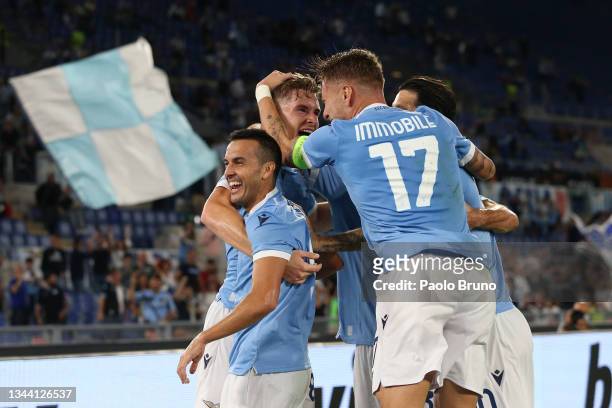
Last edited:

Name: Lazio Athletic Club
City: Rome
Venue: Stadio Olimpico
Attendance: 70,634
Nickname: Il Biancocelesti (the white and sky blues), Le Aquile (the Eagle)
League: Serie A
HONORS
DOMESTIC
Serie A/National championship: 1913-1914, 1914-1915, 1936-1937, 1972-1973, 1973-1974, 1999-2000
Coppa Italia: 1934-1935, 1957-1958, 1997-1998, 2003-2004, 2008-2009, 2012-2013
EUROPEAN
Cup Winners Cup: 1998-1999
UEFA Supercup: 1999
Società Podistica Lazio, or Lazio Athletics Club, was founded on 9 January 1900 in the Prati rione of Rome, making it the oldest Roman football team currently active. Wanting to encompass more than just the city of Rome, the club's nine original founding members chose to name the club Lazio, the same name as the region where the city of Rome was built. The primary colour of sky blue was chosen as a tribute to ancient Greece and pays homage to the advent of the modern Olympic Games.
The club's first ever match came in 1902 against Virtus, a match considered, albeit unofficially, the first Rome Derby. That match was played at Piazza d'Armi, near Piazza Mazzini, and Lazio duly won 3–0 with a hat-trick from centre-forward Sante Ancherani.
the 1907-1908 Lazio team
In 1907, the Italian Football Federation (FIGC) sponsored a Roman championship called I Categoria, which Lazio won, defeating early rivals Virtus in the final. Nonetheless, they were not invited into any national championship despite their success.

After this friendly football activity, Lazio officially gave birth to its football section in 1910 and joined official league competition in 1912 as soon as the FIGC began organising championships in the centre and south of Italy. Lazio reached the national final three times, winning back to back in 1913 and 1914 against Pro Vercelli and Casale, respectively, but losing the 1923 final to Bologna.
Lazio's first championship teams
Silvio Piola
When FIGC launched its first national league system in 1926, Lazio started from the Prima Divisione, the forerunner of present-day Serie B.
The club played in the first organised Serie A in 1929 and made their league debut on 6 October 1929, defeating Bologna 3–0 at the Rondinella ground on Via Flaminia. However, the inaugural championship was less than brilliant for Lazio, who on the final day managing a meagre 15th-placed finish.
Lazio also had a considerable Brazilian influence in their early Serie A years, known as "Brasilazio", with the club employing lots of Brazilian talent. Their coach of the day, Amílcar Barbuy, was the first Brazilian to become involved with Italian football. However, this did not bring them success, as they finished eighth in 1930–31 and 13th in 1931–32.

Brasilazio
In the summer of 1932, Barbuy was replaced by an Austrian coach, Karl Stürmer, and he led the club to their first eve win in a Rome Derby, beating the giallorossi 2–1 at home. Two-straight tenth-placed finishes under Stürmer saw him replaced by compatriot Walter Alt in 1934. His arrival also coincided with that of Silvio Piola. Piola went on to become a legend of Lazio, the highest goalscorer in Serie A history.

Led by the legendary striker Piola, Lazio achieved their first coppa italia triumph in that same season, 1934-1935, and then won the scudetto in 1937. The coach that season was Hungarian József Viola. They also competed in European competition for the first time, losing in the final of the Central European Cup against Ferencváros.
Lazio rounded out the decade with a memorable away derby win by 2–0 at the Campo Testaccio in 1939 and a solid fourth-placed finish in 1940.
This particular decade was dominated by Il Grande Torino, and Lazio could achieve no better than mid-table finishes. The 1948–49 season was a difficult one for the biancocelesti, as players were reduced to the minimum wage and several went on strike. They finished 13th, although they recovered the following season to record an impressive fourth-placed finish, made even sweeter by the difficulties of the previous year and the miserable campaign of Roma, who once again narrowly avoided the drop to Serie B.
In 1958, Lazio won its second ever Coppa Italia title. First, the club had topped their group of four, consisting of Palermo, Napoli and rivals Roma, before eliminating Marzotto and Juventus on the road to the final, where they met Fiorentina, Led by coach Fulvio Bernardini. Lazio beat la Viola 1–0 with a goal from striker Maurilio Prini, who had ironically just left Fiorentina.
Lazio captain Robert Lovati lifting the coppa italia in 1958

Unfortunately, the 60s would be a disastrous decade for Lazio, for they would be releagted in 1964 and would wait until the early 70s to get back to the top flight.
Upon their return to Serie A, Lazio build a resilient squad featuring the likes of captain Giuseppe Wilson on defense, Luciano Re Cecconi and Mario Frustalupi in midfield and the duo of Giorgio Chinaglia and rome-born argentine Delio Onnis. Together, Lazio would emerge as the surprise champions of Serie A in 1972-1973, beating Nereo Rocco's Milan and a young Juventus side for their first scudetto in decades. This would be followed by a dominant 1973-1974 campaign where they led from start to finish to go back-to-back.
Sergio Cragnotti, Lazio's iconic president in the 90s Serie A golden age
Lazio's back-to-back scudetto winners in the 70s
Unfortunately, this success was not build upon, as Onnis left to join Monaco in the french league and midfielder Luciano Re Cecconi and coach tommasso maestrelli tragically died in 1976. The bottom of the barrell was hit when Lazio were forcibly relegated to Serie B following the Totonero scandal, and they would become a yo-yo club for much of the 80s before finally returning to Serie A for good in 1988 and stabilising themselves there.

In 1992, Food bank businessman Sergio Cragnotti bought the club and invested in it, joining the spending frenzy of Serie A at the time as the league, the bestbin the world in those times, outbid each other to acquire the world's best players. Diego Fuser from Torino, Aaron Winter from Ajax and Giuseppe Signori from the surprise 5th place finishers Foggia were Cragnotti's first signings, followed by Alen Boksic and Paolo Nero in 1993, Jose Chamot in 1994 and czech manager zdenek Zeman in that same year, joining homegrown talents such as goalies Valerio Fiore and Flavio Roma, Giuseppe Favalli, Roberto Di Matteo and Alessandro Nesta.
Lazio would constantly finish in the top 4 of the legendary goldem age of Serie A in the 90s, but success still eluded them, which prompted a change in manager from Cargnotti, bringing in Sampdoria's all-conquering coach Sven-Goran Eriksson. Coming in were Pavek Nedved in 1996, Mattias Almeyda in 1997 and serbs Dejan Stankovic and Sinisa Mihaljovic and chilean Marcelo Salas in 1998, along with youth product Marco Di Vaio. Lazio would win their first silverware since 1974 by winning the coppa italia in 1998, but losing to Ronaldo's Inter in that same year's UEFA Cup final before embarking on a run to the cup winners cup title in 1999, also defeating UEFA Cup winners Manchester United in the final of the UEFA Super Cup that same year.
Lazio's time finally came in 1999-2000, where they engaged in a crazy 4-horse title fight with Juventus, Napoli and Parma. On the last day of the season, Juventus lost to Perugia and Lazio won, which meant Lazio became champions for the first time since the back to back in the 70s.
The Laziale in the 2008-2009 coppa italia

In that time, Lazio would compete in the champions league twice, in 1999-2000 and 2000-2001. They would reach the semi-finals in 99-00, losing to eventual winners Manchester United, while they would be stunned by Leeds United in 2000-2001.
However, a scandal involving prssident Cragnotti and his food products company forced him to sell the club, and Lazio would be forced to sell their stars, such as Nedved, Salas and Nesta.
What would follow would be up and down results, with the highs being an unexpected coppa italia win in 2003-2004 led by coach Roberto Mancini, the midfield mastery of Dejan Stankovic and the striker duo of Di Vaio and Bernardo Corradi, while the low would be relegation to Serie B following Calciopoli. Since then, Claudio Lotito bought the club and brought it back to Serie A on the first try, where they have been competing ever since.
With young, cheap talents onboard like fernando muslera, Modibo Diakité, Giugliemo Stentardo, Aleksandr Kolarov, stefan radu, cristian ledesma, Goran Pandev, Marco Parolo, Stefano Mauri and Stephan Lichsteiner alongside german marksman Miroslav Klose, Lazio would win two more coppa italias in 2009 and 2013 before doing another rebuild.
/origin-imgresizer.eurosport.com/2009/03/03/503245-22869349-2560-1440.jpg)
With manager Simone Inzaghi and the likes of Mattia Perrin, Stefan De Vrij, Rodrigo Caio, Sergej Milinkovic-Savic, Danilo Cataldi, Balde Keita, Felipe Anderson, Andrea Conti and the career ressurection of Ciro Immobile, Lazio has turned into one of the most competitive sides in modern day Serie A, coming close to winning titles many times, first in 2019 when they lost the coppa italia to fiorentina and in 2020's crazy 4-horse title race where they lost out to Atalanta.
After finishing runner-up again in 2023 behind Napoli, Lazio is gearing up for a title challenge, with Cataldi and Sergej being joined by free agent Daichi Kamada in midfield and Nicolo Casale from Verona completing the back line with De Vrij and Caio.

Atalanta won in 2020? Not as unlikely as it seems, their youth sector has been stacked, in the last few years, just like Sassuolo's. If only those teams could hold on to their talents, without having to sell them - Chievo Verona was this close to doing a Leicester run back in the early 2000s, and Vicenza almost did the same in the late 1970s, maybe having some unlikely teams win the championship thanks to local and/or young players could make more established sides stop thinking about exclusively lining their own pockets while buying already established players from abroad.
Well, they almost did win it IRL in 2020 during the COVID season. Also, if you took the tiem to read the roma entry, i wrote that Chievo won in 2003Atalanta won in 2020? Not as unlikely as it seems, their youth sector has been stacked, in the last few years, just like Sassuolo's. If only those teams could hold on to their talents, without having to sell them - Chievo Verona was this close to doing a Leicester run back in the early 2000s, and Vicenza almost did the same in the late 1970s, maybe having some unlikely teams win the championship thanks to local and/or young players could make more established sides stop thinking about exclusively lining their own pockets while buying already established players from abroad.
I always loved Atalanta myself, so having them win in 2020 is always a plus for dumb ol' me 😅Atalanta won in 2020? Not as unlikely as it seems, their youth sector has been stacked, in the last few years, just like Sassuolo's. If only those teams could hold on to their talents, without having to sell them - Chievo Verona was this close to doing a Leicester run back in the early 2000s, and Vicenza almost did the same in the late 1970s, maybe having some unlikely teams win the championship thanks to local and/or young players could make more established sides stop thinking about exclusively lining their own pockets while buying already established players from abroad.
Chelsea's "Big four"
Chelsea's "Big Four", Part One
2010-11 Chelsea FC Season
For the first few matches of the 2010/11 season, Sergio Agüero seemed to be a waste of money, as Didier Drogba and Nicolas Anelka scored the goals. The Argentinian striker would net his first goal in a 2-1 win at Blackburn, with his second being overshadowed in a catastrophic 3-1 home defeat by Sunderland. But then he set off on a run which would last through November. A 3-minute brace at St Andrew's turned a 1-0 deficit into a 2-1 win, before a second half winner at St James' Park gave Chelsea a win by the same score a week later. And then Chelsea went to White Hart Lane, where Agüero and Drogba converged on Tottenham in a 3-1 win. Chelsea had stayed top of the league thanks to Aguero's goals, but a blip over Christmas would see them slip to third behind the two Manchester clubs.
Chelsea would keep in touch with Man Utd throughout February and March in a late surge, with a 2-1 win at Stamford Bridge keeping the title race alive. Meanwhile, Arsenal briefly threatened but ultimately fell away, Man City spent less than 24 hours on top, and Tottenham tried - and failed - to break into the Champions League places, with their hopes being ultimately snuffed out in late April with a 3-1 loss at Stamford Bridge. Meanwhile, Chelsea took full advantage of a late stumble from Man Utd to climb back on top of the table, before they went to Old Trafford at the beginning of May. A win would have seen them win the league; instead, they lost 2-1 and United cut the gap to a solitary point. Chelsea would get a massive let-off a week later as United contrived to drop points in a 1-1 draw at home to Blackburn, only to drop points themselves in a 2-2 draw at home to Newcastle. Like the previous season, it would come down to the final day of the season, except many tipped United to win the league as they had an easier fixture in Blackpool at home. In the end, the title race was decided at Goodison Park, where Sergio Aguero turned in his best performance so far with a hat-trick to keep the Premier League trophy at Stamford Bridge. [1]
[1] The main butterfly is that with Aguero's goals, Chelsea remain in the title race throughout the 10/11 season. This keeps Carlo Ancelotti at the helm, which will make for interesting results down the line. In addition, Fernando Torres remains at Liverpool for the rest of the season, likewise Andy Carroll at Newcastle.
2010-11 Chelsea FC Season
Chelsea F.C.
2010–11 season | |
|---|---|
Owner | Roman Abramovich |
Chairman | |
Manager | |
Stadium | |
1st | |
Fourth round | |
Third round | |
Runners-up | |
Quarter-finals | |
Top goalscorer | League: Sergio Aguero (15) All: Nicolas Anelka (16) |
Highest home attendance | 41,829 vs Liverpool (6 February 2011) |
| Lowest home attendance | 40,266 vs Žilina (23 November 2010) |
For the first few matches of the 2010/11 season, Sergio Agüero seemed to be a waste of money, as Didier Drogba and Nicolas Anelka scored the goals. The Argentinian striker would net his first goal in a 2-1 win at Blackburn, with his second being overshadowed in a catastrophic 3-1 home defeat by Sunderland. But then he set off on a run which would last through November. A 3-minute brace at St Andrew's turned a 1-0 deficit into a 2-1 win, before a second half winner at St James' Park gave Chelsea a win by the same score a week later. And then Chelsea went to White Hart Lane, where Agüero and Drogba converged on Tottenham in a 3-1 win. Chelsea had stayed top of the league thanks to Aguero's goals, but a blip over Christmas would see them slip to third behind the two Manchester clubs.
Chelsea would keep in touch with Man Utd throughout February and March in a late surge, with a 2-1 win at Stamford Bridge keeping the title race alive. Meanwhile, Arsenal briefly threatened but ultimately fell away, Man City spent less than 24 hours on top, and Tottenham tried - and failed - to break into the Champions League places, with their hopes being ultimately snuffed out in late April with a 3-1 loss at Stamford Bridge. Meanwhile, Chelsea took full advantage of a late stumble from Man Utd to climb back on top of the table, before they went to Old Trafford at the beginning of May. A win would have seen them win the league; instead, they lost 2-1 and United cut the gap to a solitary point. Chelsea would get a massive let-off a week later as United contrived to drop points in a 1-1 draw at home to Blackburn, only to drop points themselves in a 2-2 draw at home to Newcastle. Like the previous season, it would come down to the final day of the season, except many tipped United to win the league as they had an easier fixture in Blackpool at home. In the end, the title race was decided at Goodison Park, where Sergio Aguero turned in his best performance so far with a hat-trick to keep the Premier League trophy at Stamford Bridge. [1]
[1] The main butterfly is that with Aguero's goals, Chelsea remain in the title race throughout the 10/11 season. This keeps Carlo Ancelotti at the helm, which will make for interesting results down the line. In addition, Fernando Torres remains at Liverpool for the rest of the season, likewise Andy Carroll at Newcastle.
Last edited:
Genoa

Name: Genoa Cricket and Football Club
City: Genoa
Nicknames: Il Griffone (the griffins), Il Rossoblu (the red and blue), Il Vecchio Balardo (the old fool)
Home Ground: Stadio Luigi Ferrari
Attendance: 36,599
League: Serie B
HONORS
Serie A/National Championship: 1898-1899, 1899-1900, 1902-1903, 1922-1923, 1923-1924, 1927-1928, 2008-2009
Coppa Italia: 1926-1927, 1936-1937, 2009-2010
EUROPEAN:
Champions League: 2009-2010
UEFA Cup: 1991-1992 Runner-up
The club was founded on 7 September 1893 as Genoa Cricket & Athletic Club. In its earliest years, they principally competed in athletics and cricket. Association football was secondly practised. Since the club was set up to represent England abroad, the original shirts worn by the organisation were white, the same colour as the England national team shirt. At first Italians were not permitted to join as it was a private club. Genoa's activities took place in the north-west of the city in the Campasso area, at the Piazza d'Armi.
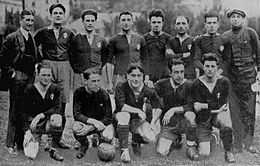
Genoa were one of the early powerhouses of the italian scene, being conststent contenders in the northern leagues and wiinning three national championships at the turn of the 19th century. However, the beginning fo the 20th century woudl see Genoa finding it hard to compete, for the italian federation prohibited foreigners from playing in italy, and genoa's squads were predominantly english players. The arrival at a new stadium in Marassi, with a capacity of 25,000 people, along with the arrival of coach william garbutt, Genoa would be back to the top in the roaring 20s, a fruitful period which saw the club compete against the likes of Bologna and Juventus for the northern league and national championship, winning three in 1923, 1924 and 1928, along with their first coppa italia triumph in 1927.
The club's league form became highly erratic during the early 1930s, with varying league positions; it was during the 1933–34 season that Genova suffered their first ever relegation to Serie B, the second level of Italian football. Thankfully for the club, they were able to bounce back under the management of Vittorio Faroppa, winning promotion by finishing top of their group ahead of Novara. In 1936, the ambitious Juan Culiolo took over as president of the club; in 1936–37 they achieved a 6th-place finish and also won the Coppa Italia by beating FC Roma 1–0 with a goal from Mario Torti.
During the following season Genova finished in third place, this was a particularly tight season with winners Milan finishing only three points ahead of the club.
After the Second World War the ability of Genoa to finish in the upper ranks of Serie A declined in a significant manner; throughout the rest of the 1940s the club were middle-table finishers. The 1948–49 saw three highly significant results, Genoa beat Inter 4–1, the famous Grande Torino side 3–0 and Padova 7–1. The 1950s started in poor fashion for the club, they had bought Argentine Mario Boyé from Boca Juniors but he stayed only one season and the club were relegated after finishing bottom of the table, but after two seasons they achieved their return after winning Serie B, ahead of Legnano. Ragnar Nikolay Larsen was a noted player for the club during this period and they sustained mid-table finishes for the rest of the decade.
Despite suffering a relegation in 1959–60 and then a promotion back up to Serie A in 1961–62, Genoa had a respectable amount of cup success in the first half of the 1960s. The club won the Coppa delle Alpi in 1962; it was the first time the competition had been competed between club teams instead of international ones, the final was played at home while Genoa beat French club Grenoble Foot 38 by 1–0 with a goal from Nizza. Genoa won the same competition again two years later, the final was held at the Wankdorf Stadium in Bern, Switzerland; Genoa defeated Catania 2–0, with both goals from Giampaolo Piaceri to take the trophy.
The celebrations for the club did not last long however, as the year following their last cup success they were relegated down to Serie B again. This time their stay at the second tier of the Italian football system would be far longer than previous relegations, the club was unstable as it changed manager each season. Genoa even experienced their first relegation to Serie C in 1970, financially the club fell into difficulties and had several ownership changes.
Over the course of the next two decades, Genoa would be a yo-yo club, bouncing around the divisions with alarming regularity. Despite gigi simoni getting them in serie a in the 80s, they would suffer relegation despite finishing on the same points as Lazio.
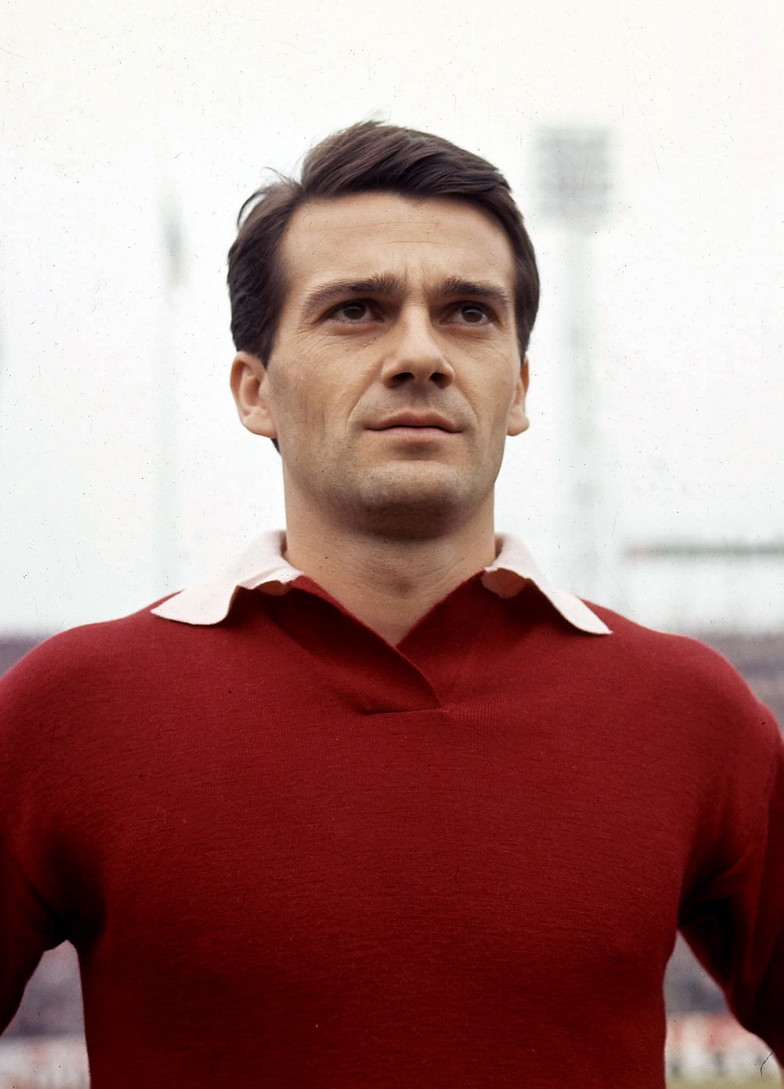
The club was purchased by Calabrian entrepreneur Aldo Spinelli in 1985 and Genoa were finishing in the top half of Serie B. After a slip in form during 1987–88, Genoa refocused their energy and were able to achieve promotion back into Serie A the following season, finishing as champions ahead of Bari. Genoa achieved highs during the 1990–91 season where they finished in 2nd place, remaining undefeated at home for the entire campaign, winning games against all the big sides including Juventus, Inter, AC Milan, Roma, Lazio, Fiorentina, SSC Napoli, as well as their hated local rivals Sampdoria who won the title that season. At that time, the squad was filled with talented players such as Davide Fontolan, Stefano Eranio, Carlos Aguilera, Tomas Skruhavy, Branco, Roberto Onorati, Gianluca Signorini, young Christian Panucci and canadian John Van T'Schip.
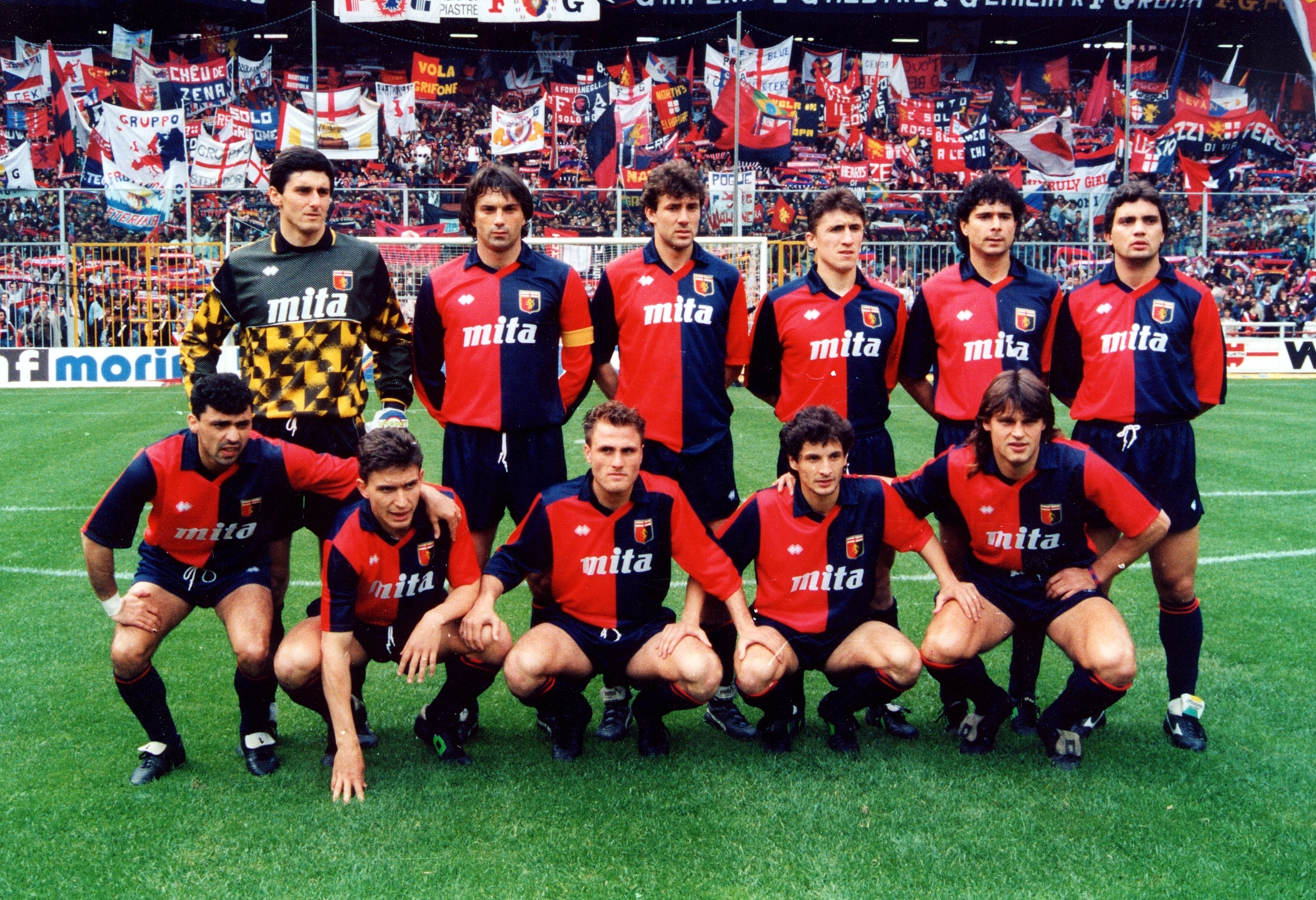
Subsequently, Genoa entered the UEFA Cup, where they would light up the competition, causing big surprises by defeating both Liverpool and Ajax in crazy two-legged ties, with Van T'schip being the hero, becoming the first Canadian to score a goal in a european tie as Genoa advanced to the final, where they would unfortunately falter against Gigi Radice's young Torino side featuring Gigi Lentini, Walter Casagrande, Enzo Francescoli, Luca Marchegianni and a young Christian Vieri.
Genoa remained competitive for much of the early 90s. However, their lack of finances compared to the other clubs in the golden age Serie A meant that most of their players inevitably left for greener pastures by the time the mid-90s rolled around: Panucci to AC Milan, Aguilera and Van'T Ship to the ASL, Eranio to Derby County, Branco to Middlesbrough, Fontolan to Inter, then Bologna and, finally, young prospect Vicenzo Montella to fierce rivals Sampdoria and Gigi Simoni going to manage Perugia.
It has to be said that chairman Spinelli had a very different management approach from that of most businessmen turned football club owners. While his colleagues saw football as a marketing and public relation investment and were quite ready to siphon funds out of their main business to keep their teams afloat and replenish their player roster Spinelli saw Genoa as another business whose main aim was that of generating revenue for its owner (namely, himself) and so was more than happy to sell esteemed players for hefty revenues of which just a minimal fraction was then re-invested in the team, often for the acquisition of lesser-valued replacements or virtual unknowns.
Genoa would be relegated at the end of the 1995-1996 season, and the club would spend the next few years in complete disaray, with constant managerial changes, a poor financial situation and little hope of gaining promotion, outside of a decent 6th-place finish in 1999–00.
From 1997 until 2003, Genoa had a total of three different owners and four different chairmen, before the club was passed on to the toys and games tycoon from Irpinia, Enrico Preziosi, already chairman of Como, a football club he previously owned.
Preziosi took over in 2003, when Genoa should have been relegated to C1 series after a dismal season, but was instead "saved" along with Catania and Salernitana by the football federation's controversial decision to extend Serie B to 24 teams. Things started to look up for Genoa; they won Serie B in 2004–05. However, allegations were raised that the club had fixed a match on the last day of the season between themselves and Venezia. The 3–2 victory in the match saw Genoa win the league, with a draw having been good enough to maintain its position in the end. The Disciplinary Committee of FIGC saw fit to instead place Genoa bottom of the league and relegate them down to Serie C1 with a three-point deduction on 27 July 2005.
For their season in Serie C1 for 2005–06, Genoa were hit with a six-point penalty from the previous season. After leading for much of the season, they eventually finished as runners-up and were entered into the play-offs, beating Monza 2–1 on aggregate to achieve promotion back into Serie B. During the summer break Gian Piero Gasperini was brought in as the new manager, he helped the club to gain promotion during the 2006–07 season, it was ensured on the last day of the season where they drew a 0–0 with Napoli, both clubs were happily promoted back into Serie A.
The 2007–08 season, the first Serie A championship played by Genoa in 12 years, saw it finishing in a respectable tenth place, right after the "big ones" of Italian football.
The 2008 off-season proved to be the biggest off-season in Genoa history. First of all, it saw the return of Il principe, Diego Milito, from relegated Real Zaragosa, who specifically chose to return to Genoa despite having offers from much bigger european clubs, all because of one man, whom Genoa unexpectedly managed to get as new manager:

After letting his contract with West Ham United run out after the 2007-2008 season, José Mourinho attempted to become coach of FC Barcelona to no avail, the blaugrana preffering club legend pep guardiola instead. After also being rejected by Real Madrid and Inter, who went with Manuel Pellegrini and Claudio Ranieri, respectively, along with bayern munich going for the returning Jupp Heynckes, Mourinho found himself unexpectedly on the unemployment line. Everybody expected him to take a sabbatical, but to everyone's surprise, he joined Genoa, and during his first press conference, he stated that he will do the exact same thing he did with FC porto at Genoa, which nobody believed at that time.
Knowing that he didn't have the budget to compete with the big teams, Mourinho instead made the most out of what he had: the club boasted some promising young talents in defenders Sokratis, Salvatore Bochetti, giuseppe biava, giandomenico mesto and domenico criscito, goalkeeper Marco Amelia, midfielder Omar Milanetto, wingers Giuseppe Sculli and captain Marco Rossi, as well as the mewly arrived Milito as striker. Mourinho completed Genoa's transfer dealings by bringing in his former FC Porto stalwart Deco for $10 million and young italian midfielder Thiago Motta as a free agent.

Diego Milito
Thiago Motta

Captain Marco Rossi
With a ragtag bunch of misfits and a manager eager to prove that he is still the special one, Genoa would take Serie A by storm in the 2008-2009 season, becoming a tough, hard to play side with attacking flair provided by deco, Rossi and Milito, the latter just pipping out Zlatan Ibrahimovic for top scorer in serie A with 27 goals as Mourinho and Genoa would cause the miracle of miracles and win their first scudetto since 1928!

The victory parade was quite possibly the biggest in the city's history, and Genoa would play in the champions league for the first time in its history. Mourinho even stated that this team might have what it takes to win the whole thing. That's how high the confidence in the locker room was.
Of course, nobody believed them, but impossible is not in the special one's vocabulary. He proceeded with some shrewd signings for depth, with free agent Lucio coming in from Bayern Munich and Alberto Zapater from Real Zaragossa in the midfield. Taking advantage of plenty of disputes, mourinho snapped up Goran Pandev from Lazio and Luca Toni on loan from bayern munich in january as Genoa made a run to the champions league final, defeating the likes of CSKA Moscow in the quarter-finals and Valencia in the semi-finals to go to Santiago Bernabeu to face the overwhelming favorites Barcelona in the final.
Mourinho sent Domenico Criscito and Thiago Motta to man-mark Lionel Messi all night in a 3-5-2 formation, with Bocchetti slotting in at the back 3 with Lucio and Biava to beat thierry henry and win aerial battles and Criscito moving up to left wingback to cover messi, while captain Marco Rossi started from the bench as Giandomenico mesto took charge on the right flank. This would prove fruitful, as Genoa managed to shut down Messi in the final, with Diego Milito scoring a brace as Genoa did the unthinkable: they defeated Barcelona 3-1 and won the champions league! They would later win the coppa italia in that same year

Mourinho has done it again. He has become the first manager to win the european cup with three different teams, all with differing levels of budgets. This massive exploits attracted the attention of Real Madrid, and the portuguese would enjoy a fruitful spell at Madrid, winning the 2011-2012 la liga with the most points in la liga history.
For Genoa, sadly, the fairytail would end there. Despite a few competitive years, most of the squad would age out or, in the case of Sokratis, Pandev and Thiago Motta, be sold to other clubs as Genoa would almost immediately enter rebuild and go down to mid-table in Serie A. Since then, Genoa has gone nowhere near the top half of the table, eventually becoming a yo-yo club as we enter the 2020s...despite this, Genoa faithfuls would always carry the precious memories that Mourinho and that late 00s Genoa team offered them.
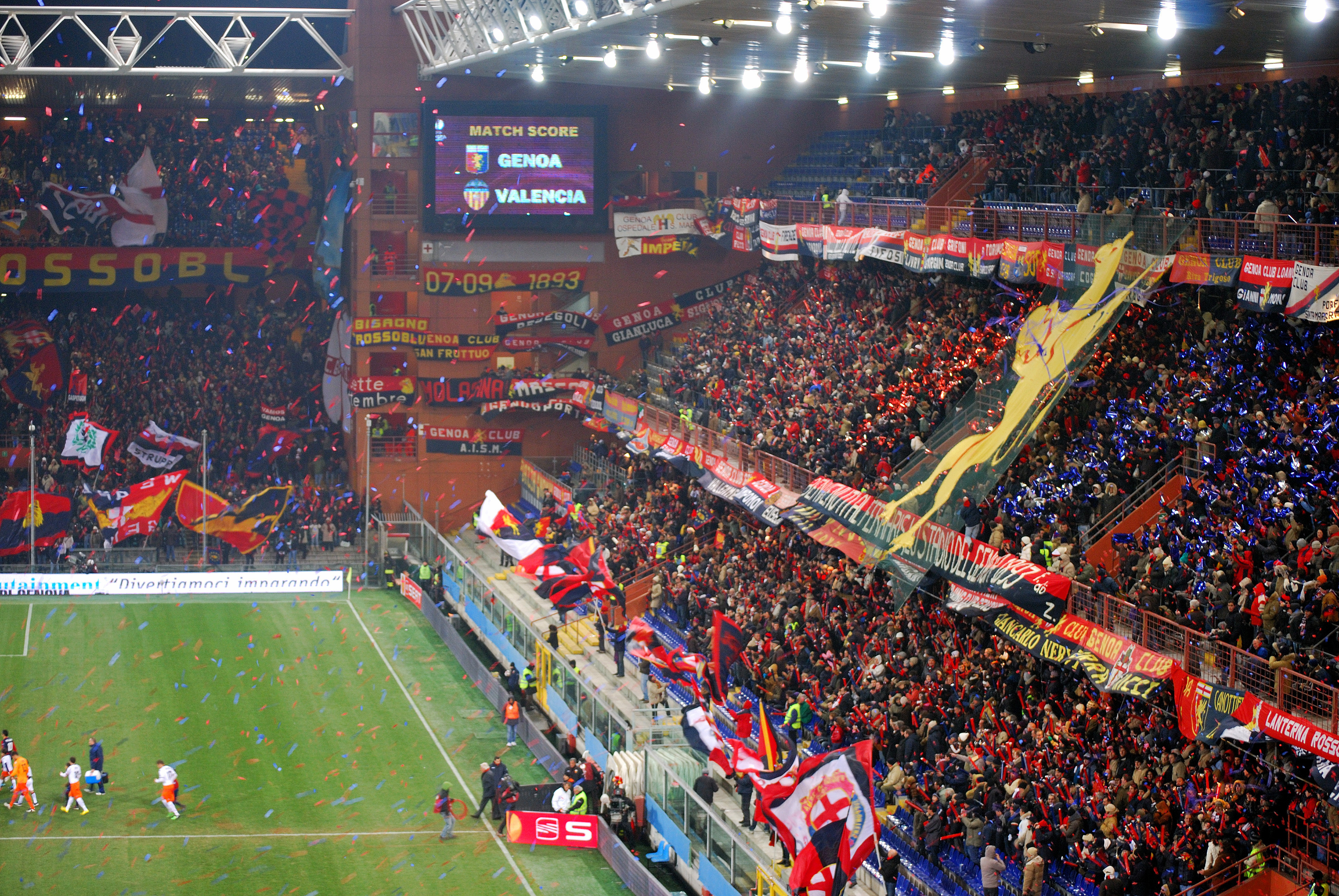
So yeah, i hope i managed to made you believe in kayfabe
Last edited:
Phenomenal Stuff mate, keep it up! 😃Chelsea's "Big Four", Part One
2010-11 Chelsea FC Season
Chelsea F.C.
All: Nicolas Anelka (16)Lowest home attendance 40,266 vs Žilina (23 November 2010)
For the first few matches of the 2010/11 season, Sergio Agüero seemed to be a waste of money, as Didier Drogba and Nicolas Anelka scored the goals. The Argentinian striker would net his first goal in a 2-1 win at Blackburn, with his second being overshadowed in a catastrophic 3-1 home defeat by Sunderland. But then he set off on a run which would last through November. A 3-minute brace at St Andrew's turned a 1-0 deficit into a 2-1 win, before a second half winner at St James' Park gave Chelsea a win by the same score a week later. And then Chelsea went to White Hart Lane, where Agüero and Drogba converged on Tottenham in a 3-1 win. Chelsea had stayed top of the league thanks to Aguero's goals, but a blip over Christmas would see them slip to third behind the two Manchester clubs.
Chelsea would keep in touch with Man Utd throughout February and March in a late surge, with a 2-1 win at Stamford Bridge keeping the title race alive. Meanwhile, Arsenal briefly threatened but ultimately fell away, Man City spent less than 24 hours on top, and Tottenham tried - and failed - to break into the Champions League places, with their hopes being ultimately snuffed out in late April with a 3-1 loss at Stamford Bridge. Meanwhile, Chelsea took full advantage of a late stumble from Man Utd to climb back on top of the table, before they went to Old Trafford at the beginning of May. A win would have seen them win the league; instead, they lost 2-1 and United cut the gap to a solitary point. Chelsea would get a massive let-off a week later as United contrived to drop points in a 1-1 draw at home to Blackburn, only to drop points themselves in a 2-2 draw at home to Newcastle. Like the previous season, it would come down to the final day of the season, except many tipped United to win the league as they had an easier fixture in Blackpool at home. In the end, the title race was decided at Goodison Park, where Sergio Aguero turned in his best performance so far with a hat-trick to keep the Premier League trophy at Stamford Bridge. [1]
[1] The main butterfly is that with Aguero's goals, Chelsea remain in the title race throughout the 10/11 season. This keeps Carlo Ancelotti at the helm, which will make for interesting results down the line. In addition, Fernando Torres remains at Liverpool for the rest of the season, likewise Andy Carroll at Newcastle.
Chelsea's "Big four" part 2
Chelsea's "Big Four" Part 2, 2011-12 season
Premier League
Eager to emulate a Man Utd "three-peat", Chelsea were able to pip Arsenal and Tottenham to the signature of Juan Mata, while Man City spent big to sign Fernando Torres from Liverpool. The difference was highlighted on 10th September; while Torres tried and failed to breach a stubborn Wigan defence, Aguero helped himself to a hat-trick as Chelsea ran riot at the Stadium of Light in a 5-1 win. However, at Old Trafford a week later, it was United who took the points in a 3-2 win while a horrific Torres miss and a Vincent Kompany own goal consigned Man City to a 2-1 defeat at Fulham.
Another turning point came on Matchday 9. Chelsea's win over Everton the previous weekend had put them top of the league thanks to Man Utd drawing at Anfield, and they had a chance to extend their lead following Man Utd's 5-1 home defeat in the Manchester Derby. But QPR hadn't read the script, and went 1-0 up through an early penalty before both Jose Bosingwa and Didier Drogba were shown dubious red cards. As it happened, Aguero hadn't read QPR's script, and salvaged a point for Chelsea with 20 minutes left.
Chelsea would, however, suffer a blip throughout November, losing a bizarre London Derby 5-3 at home to Arsenal before conceding a late Glen Johnson equaliser in a 2-2 draw at home to Liverpool. By Christmas, Chelsea sat in third, just behind the two Manchester clubs. A brace from Aguero at White Hart Lane had sunk Tottenham 3-1, but the Blues had dropped points in draws against Wigan and Fulham, as well as a home defeat to Aston Villa and a goalless draw at Norwich which saw Chelsea fall further behind the top two. But, just as it looked like United were going to run away with the title, Aguero found his shooting boots again and brought them back down to earth with a bump in a 4-2 win. However, Chelsea would briefly slip to 4th with a defeat at Everton before a 4-0 win over Bolton returned them to 3rd. Aguero then found his shooting boots again, scoring the decisive second as Chelsea stunned Manchester City 2-1 at the Etihad (just after a hapless Fernando Torres had missed a penalty), a brace in a 3-1 win at Fulham and the only goal of the game in a 1-0 win at the Emirates. However, having got within touching distance of Man Utd, Chelsea contrived to lose at home to Newcastle and away to Liverpool which put paid to a top two finish, before Aguero rounded off the league season with a last-minute goal in a 3-1 home win over Blackburn Rovers. Meanwhile, Man Utd's 1-0 win at Sunderland was enough to secure the title, as Fernando Torres - who had scored a hat-trick in a 4-0 win at home to Man Utd a month earlier - missed several chances in a 2-2 draw at home to Queens Park Rangers - a draw which wasn't enough to escape relegation, although Bolton's draw at Stoke made that academic.
1. Man Utd 88pts
2. Man City 83pts
3. Chelsea 79pts
4. Arsenal 69pts
5. Tottenham 68pts
6. Newcastle 65pts
FA Cup
Aguero would score in a 5-0 win at home to Portsmouth in the 3rd round, as well as a winning goal at Birmingham in the 5th round and a brace against Leicester. But it was at Wembley on 15th April when he had his best game in the competition, grabbing a brace in a 7-1 demolition of Tottenham as Chelsea went on to win the FA Cup, beating Liverpool in the final.
Champions League
It was in Europe that Aguero would make a massive difference, scoring a penalty in a 2-0 win against Genk on Matchday 4 that effectively put Chelsea in the last 16. Aguero would then leave his mark on Napoli, as a 2-1 defeat in Naples was overturned with a 5-1 win in which he scored a hat-trick. His second half goal against Barcelona in a 2-0 win in the semi final first leg was then complemented by a late equaliser in the Nou Camp which snuffed out Barcelona's hopes of retaining their trophy. Then came the final, with speculation that Ancelotti's job was on the line, and in the last minute of extra time, after Didier Drogba had equalised Muller's opener, came the iconic commentary: "...is there time for one final attack. Lampard, sends Mata down the left. Mata with a ball into the box, Drogba's dummied it, it's Sergio Agueroooooooooooo! Incredible! Chelsea have won it! Aguero has won it! It's the greatest night in Chelsea's history! It's deja vu for Bayern Munich!" It was a result which many believed cemented the arrival of another of the "Big Four" the following summer, while a third, future, member had been signed in January and would spend two and a half seasons on loan.
Premier League
Eager to emulate a Man Utd "three-peat", Chelsea were able to pip Arsenal and Tottenham to the signature of Juan Mata, while Man City spent big to sign Fernando Torres from Liverpool. The difference was highlighted on 10th September; while Torres tried and failed to breach a stubborn Wigan defence, Aguero helped himself to a hat-trick as Chelsea ran riot at the Stadium of Light in a 5-1 win. However, at Old Trafford a week later, it was United who took the points in a 3-2 win while a horrific Torres miss and a Vincent Kompany own goal consigned Man City to a 2-1 defeat at Fulham.
Another turning point came on Matchday 9. Chelsea's win over Everton the previous weekend had put them top of the league thanks to Man Utd drawing at Anfield, and they had a chance to extend their lead following Man Utd's 5-1 home defeat in the Manchester Derby. But QPR hadn't read the script, and went 1-0 up through an early penalty before both Jose Bosingwa and Didier Drogba were shown dubious red cards. As it happened, Aguero hadn't read QPR's script, and salvaged a point for Chelsea with 20 minutes left.
Chelsea would, however, suffer a blip throughout November, losing a bizarre London Derby 5-3 at home to Arsenal before conceding a late Glen Johnson equaliser in a 2-2 draw at home to Liverpool. By Christmas, Chelsea sat in third, just behind the two Manchester clubs. A brace from Aguero at White Hart Lane had sunk Tottenham 3-1, but the Blues had dropped points in draws against Wigan and Fulham, as well as a home defeat to Aston Villa and a goalless draw at Norwich which saw Chelsea fall further behind the top two. But, just as it looked like United were going to run away with the title, Aguero found his shooting boots again and brought them back down to earth with a bump in a 4-2 win. However, Chelsea would briefly slip to 4th with a defeat at Everton before a 4-0 win over Bolton returned them to 3rd. Aguero then found his shooting boots again, scoring the decisive second as Chelsea stunned Manchester City 2-1 at the Etihad (just after a hapless Fernando Torres had missed a penalty), a brace in a 3-1 win at Fulham and the only goal of the game in a 1-0 win at the Emirates. However, having got within touching distance of Man Utd, Chelsea contrived to lose at home to Newcastle and away to Liverpool which put paid to a top two finish, before Aguero rounded off the league season with a last-minute goal in a 3-1 home win over Blackburn Rovers. Meanwhile, Man Utd's 1-0 win at Sunderland was enough to secure the title, as Fernando Torres - who had scored a hat-trick in a 4-0 win at home to Man Utd a month earlier - missed several chances in a 2-2 draw at home to Queens Park Rangers - a draw which wasn't enough to escape relegation, although Bolton's draw at Stoke made that academic.
1. Man Utd 88pts
2. Man City 83pts
3. Chelsea 79pts
4. Arsenal 69pts
5. Tottenham 68pts
6. Newcastle 65pts
FA Cup
Aguero would score in a 5-0 win at home to Portsmouth in the 3rd round, as well as a winning goal at Birmingham in the 5th round and a brace against Leicester. But it was at Wembley on 15th April when he had his best game in the competition, grabbing a brace in a 7-1 demolition of Tottenham as Chelsea went on to win the FA Cup, beating Liverpool in the final.
Champions League
It was in Europe that Aguero would make a massive difference, scoring a penalty in a 2-0 win against Genk on Matchday 4 that effectively put Chelsea in the last 16. Aguero would then leave his mark on Napoli, as a 2-1 defeat in Naples was overturned with a 5-1 win in which he scored a hat-trick. His second half goal against Barcelona in a 2-0 win in the semi final first leg was then complemented by a late equaliser in the Nou Camp which snuffed out Barcelona's hopes of retaining their trophy. Then came the final, with speculation that Ancelotti's job was on the line, and in the last minute of extra time, after Didier Drogba had equalised Muller's opener, came the iconic commentary: "...is there time for one final attack. Lampard, sends Mata down the left. Mata with a ball into the box, Drogba's dummied it, it's Sergio Agueroooooooooooo! Incredible! Chelsea have won it! Aguero has won it! It's the greatest night in Chelsea's history! It's deja vu for Bayern Munich!" It was a result which many believed cemented the arrival of another of the "Big Four" the following summer, while a third, future, member had been signed in January and would spend two and a half seasons on loan.
AC Milan
Nickname: Rossoneri (Red and Blacks), Il Diavolo (The Devil)
Home Ground: Stadio San Siro
Capacity: 80,000
League: Serie A
Honors:
Domestic
Serie A (10): 1901, 1906, 1907, 1950/51, 1956/57, 1958/59, 1961/62, 1967/68, 1972/73, 2021/22
Serie B (3): 1980/81, 1982/83, 1995/96
Coppa Italia (4): 1966/67, 1972/73, 2002/03, 2015/16
Supercoppa Italiana: 2016
Continental
European Champions League (1): 1957/58
UEFA Cup: 1985/86 (Semi-finals)
European Cup Winners Cup: 1967/68
Latin Cup: 1951, 1956
Intercontinental Cup: 1969
AC Milan was founded as Milan Foot-Ball and Cricket Club in 1899 by English expatriate Herbert Kilpin, who claimed that the team shall be one made of devils, with the colors red and black being made to invoke fear in their opponents. Sure enough, the Devils managed to be competitive from the very start, with Milan winning the Italian Football Championship in 1901, followed by two more titles during the decade. However, 1908 saw a massive dispute occurring in the club. That year, the Italian Football Association announced that there would be two National Championships - the Italian National Championship and the Italian Federal Championship.
Herbert Kilpin, AC Milan's Founder

The Italian National Championship in itself imposed a rule that only Italians must play for their respective Teams, while the Federal Championship was open to anyone. While the decision was that Milan would play in the National Championship, many of the members disagreed due to a good number of players being Swiss.
And so, a group of Italians and Swiss were unhappy about the domination of Italians in the Milan team and broke away from them, leading to the creation of Internazionale. The name of the club derives from the wish of its founding members to accept foreign players without limits as well as Italians. Thus, from 1908 onwards, the two Milan sides were direct enemies to one another, with the first Milan derby occurring on October 18th in which FC Milan won 2-1. However, Internazionale was the far more successful club of the two, with Milan struggling for the ensuing decades.
Nowadays, the Milan Derby (Aka Derby della Madonnina) Is one of Europe's greatest
It would take Milan years to finally recover, and they did so in the Record-breaking 1950/51 season of Serie A, where the Black and Reds scored 107 goals to win their first Scudetto thanks to the Swedish trio Gunnar Nordahl, Gunnar Gren and Nils Liedholm. Subsequently, Milan would win the Latin Cup in 1951, and they would repeat that success in 1956. With the European Cup established in 1955, Milan would qualify for the tournament in 1957, eventually Winning the European Cup in the 1957/58 iteration after winning against Hungarian side Vasas, thus becoming the first Italian club to win the competition.
The iconic No-Lie-Gre trio of 50s Milan

The 1960s began with the debut of Milan's legend Gianni Rivera in 1960: he would remain with the club for the rest of his career for the following 19 seasons. In 1961, Nereo Rocco was appointed as new coach of the club, which under his leadership won immediately a scudetto in 1961–62. The 60s saw Milan grow into a member of the "Big ones" group of Italian clubs consisting of City Rivals Internazionale and Torinese Clubs Juventus and Torino, followed closely by Bologna and Fiorentina. After winning their first Coppa Italia in 1967 against Padova, Milan then went on to lift their second European trophy in the Cup Winners Cup. With these successes, Milan had firmly established itself as a dinasty in Serie A
The 1970s were characterized by several memorable seasons in which Milan battled against its greatest rivals and iconic players like Gianni Rivera. A double occurred in the 1972/73 season, where Milan beat Juventus both in Serie A and Coppa Italia, and the latter parts of the decade then saw the club hunting their 10th title, in an effort to earn the fabled Gold Star.
Gianni Rivera

However, with the 70s ending, Milan would enter a seemingly endless freefall. The club in 1980 was involved in the Totonero scandal and as punishment was relegated to Serie B for the first time in its history. The scandal was centred around a betting syndicate paying players and officials to fix the outcome of matches. Milan achieved promotion back to Serie A at the first attempt, winning the 1980–81 Serie B title, but were again relegated a year later as the team ended its 1981–82 campaign in third-last place. In 1983, Milan won the Serie B title for the second time in three seasons to return to Serie A, where they achieved a sixth-place finish in 1983–84. The late 80s would see Milan constantly fighting in the lower ends of the table, with Paolo Virdis Constantly saving the club from relegation. But, there were some highlights like the club's appearance in the UEFA Cup Semi-finals, where they beat Tottenham Hotspur on penalties.
Pietro Paolo Virdis, the man who saved Milan for the entirety of the mid 80s

But, 1989 saw Milan finally run out of steam, and the club went down for the third time in their history. It would take Milan 7 years to finally come back to Serie A, and an 11th place saw concerns that the Devils would likely fall back to Serie B. A few years in the mid table saw Milan stagnate, but the Rossoneri did sign a bit of a coup when they got Zvonimir Boban from Bari and later down the line Filippo Inzaghi From Atalanta for a fee of 17 million €.
With that, AC Milan began the new millennium with some promising form, including a memorable 3-0 thrashing of Inter, but Milan could only finish 12th, and the following few years were at best seeing Milan finish 3rd in the 2005/06 season, along with winning the Coppa Italia in 2002/03. But, it would all soon come crashing down, when it was uncovered that the club was involved in the Calciopoli scandal. Thus, Milan was deducted 15 points in the 2006/07 season and prohibited from participating in any European competition.
Milan's magician - Filippo "Pippo" Inzaghi

Following the scandal, local rivals Internazionale dominanted the league, followed closely by Roma; Fiorentina, and most shockingly Genoa and Udinese. The club greatly declined in form, and would only manage to win one trophy during this period after lifting the 2015/16 Coppa Italia. However, this was nothing more but a false dawn, as Milan struggled in Serie A. But, the hiring of Stefano Pioli started a set of circumstances that would see the club improve in form from 2019 onwards. Finally, 2021/22 saw AC Milan win Serie A for the first time in 49 years, thus ending the club's wait for the 10th Scudetto, and adding the Golden Star to their badge. Nowadays, Milan has been enjoying another respectable period of success, with their appearamce in the European Cup final showing that the red Devils were firmly back in the European scene, despite losing the final to Inter Milan. Domestically, the club has once again established itself as one of the league's most competitive, with their rivalry with Internazionale once again being deemed as one of Europe's greatest along with El Classico, the Ost-West derby, the Yugoslav Derby and the Merseyside Derby.
Last edited:
Threadmarks
View all 84 threadmarks
Reader mode
Reader mode
Recent threadmarks
Reichspokal (Mildtryth) SSC Napoli (ArupinumMaivista) England County leagues (Atzyn) La Plata Championship (Atzyn) Barcelona: 1994-2008 (ArupinumMaivista and Kinnikuniverse) Cup Winners' Cup (Kinnikuniverse) US Fiumana Inter Montreal (Kinnikuniverse)
Share: